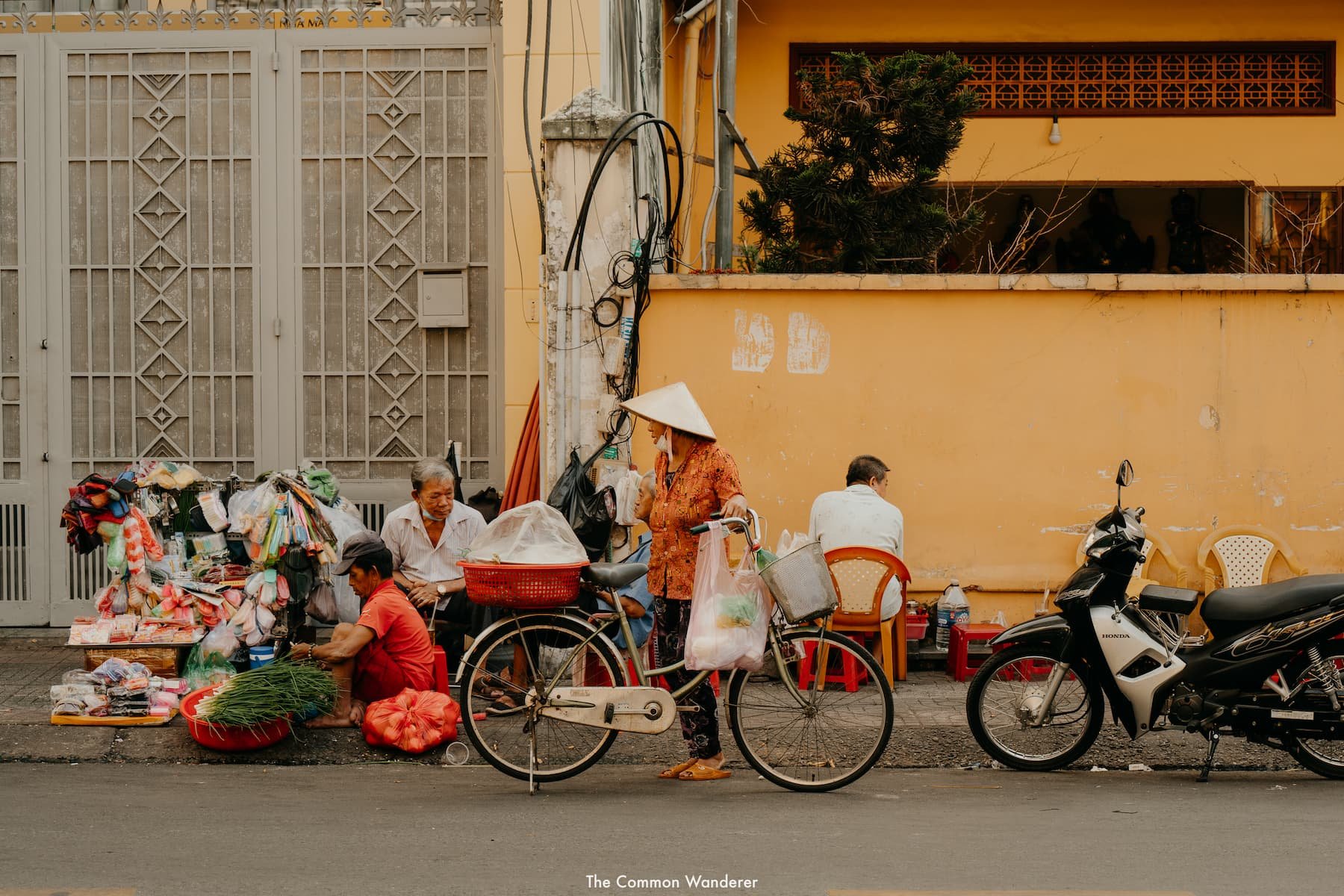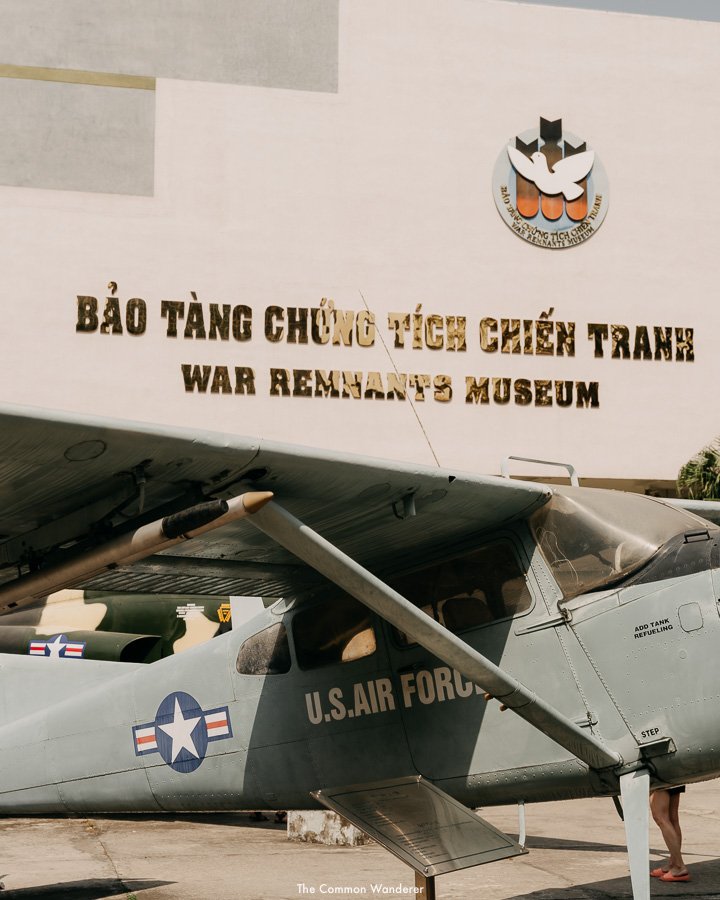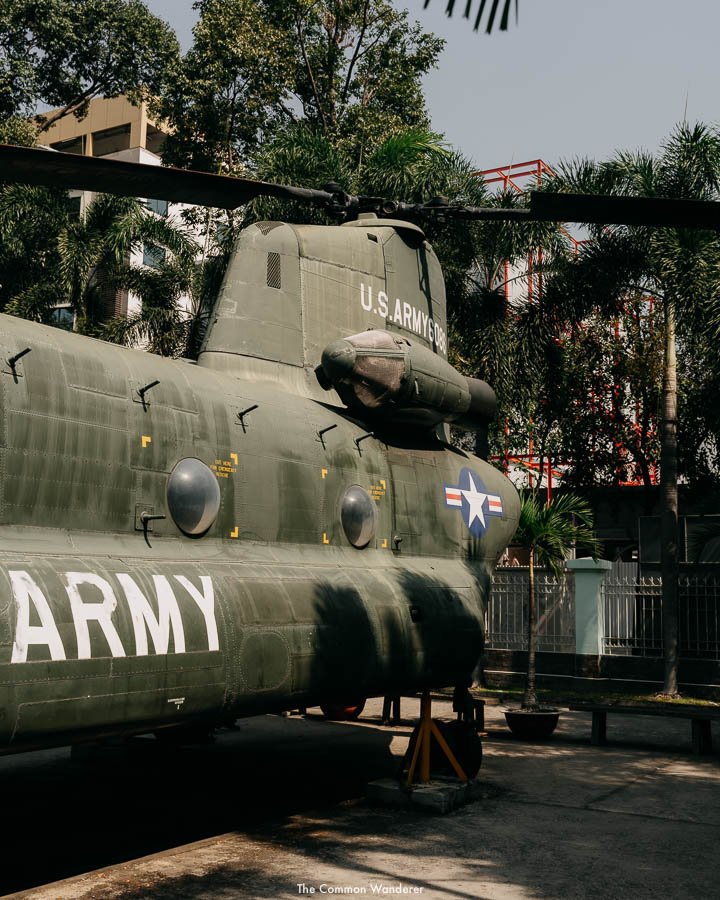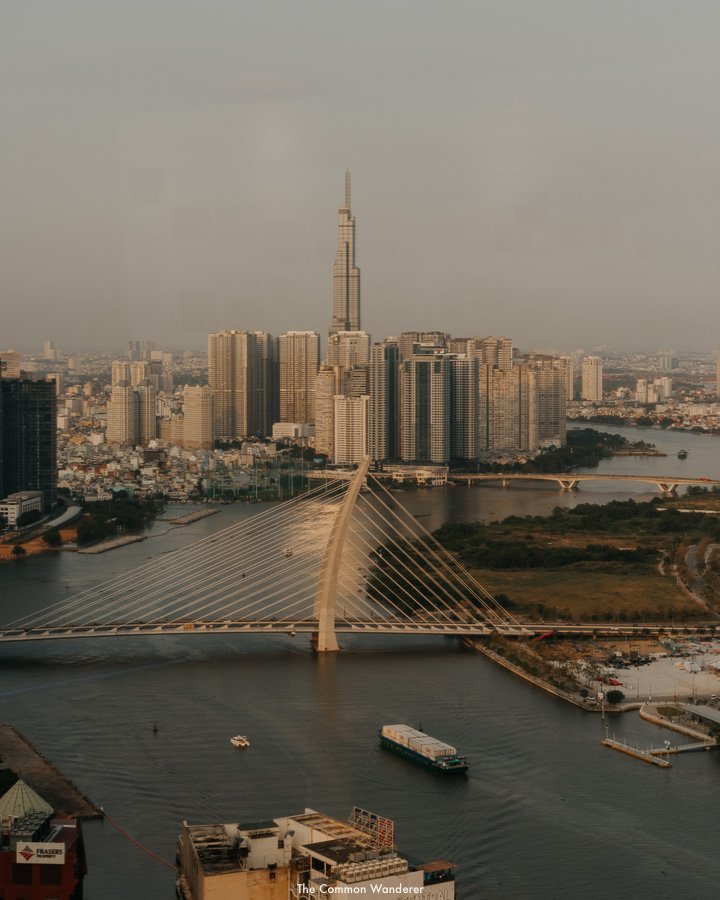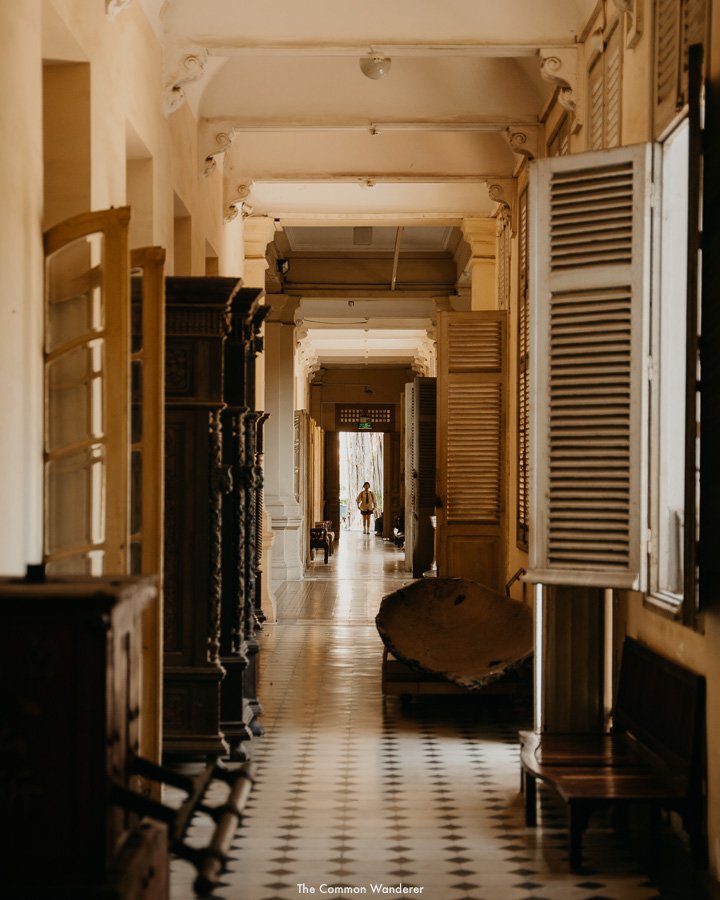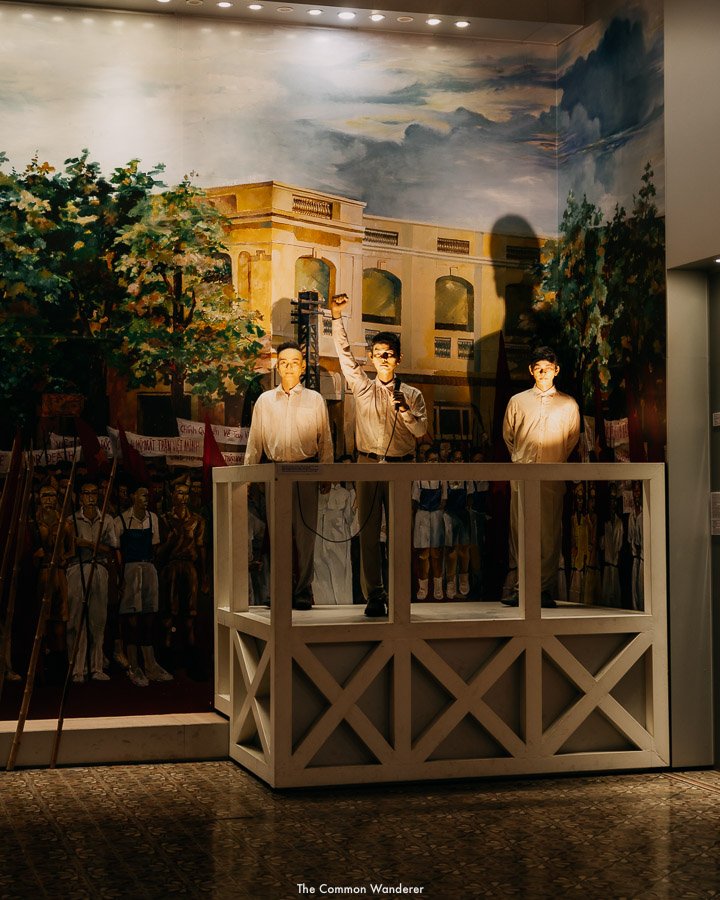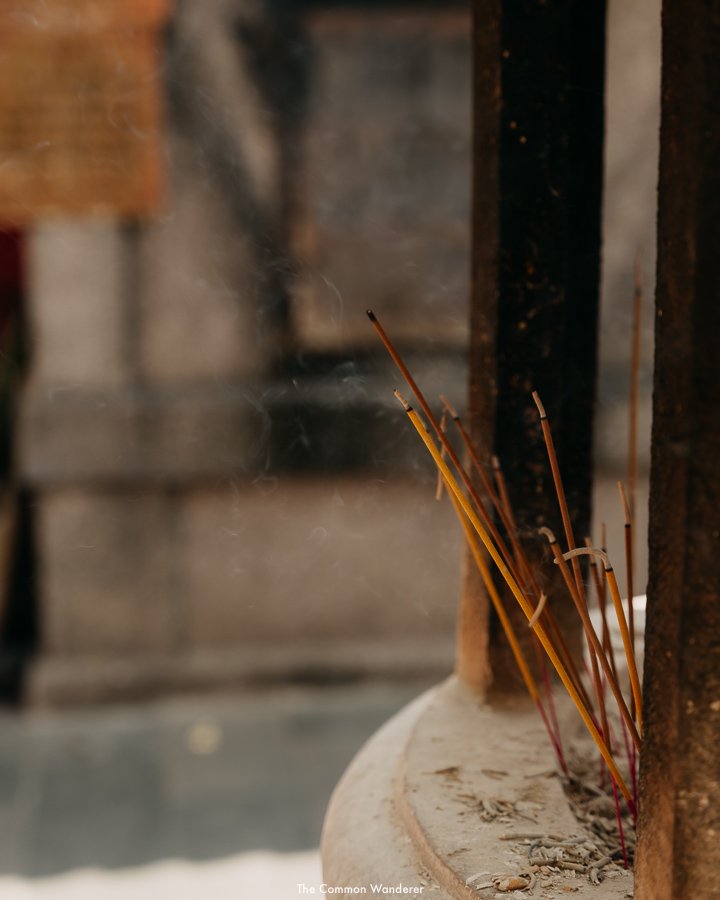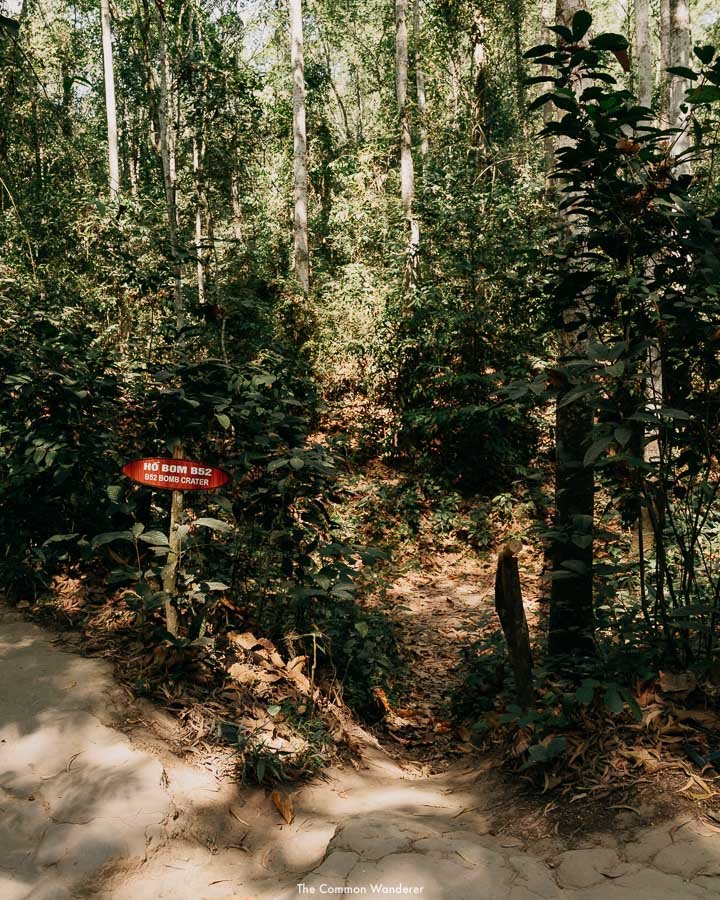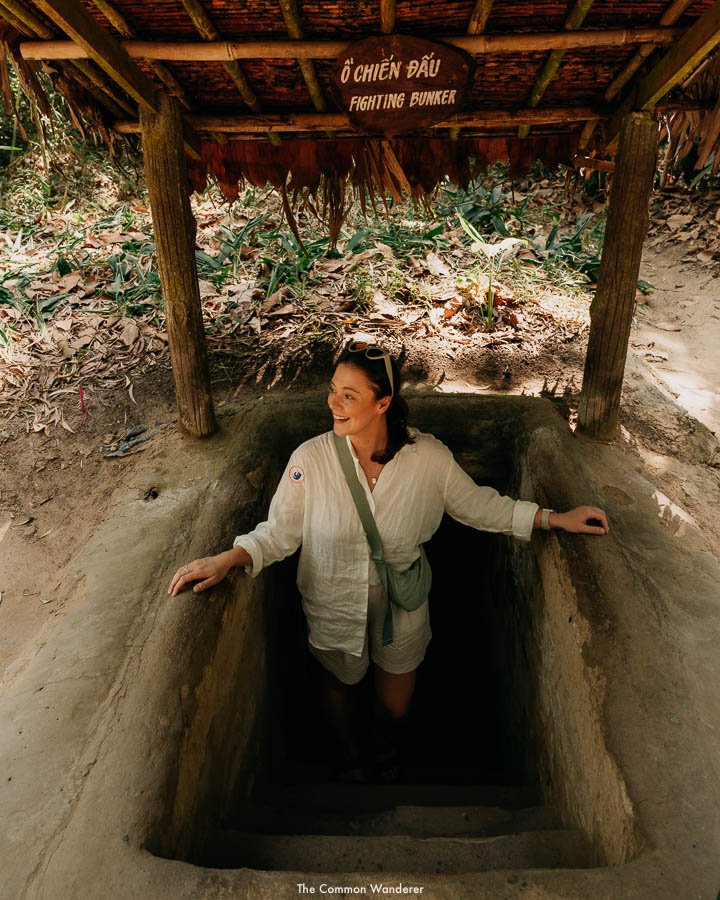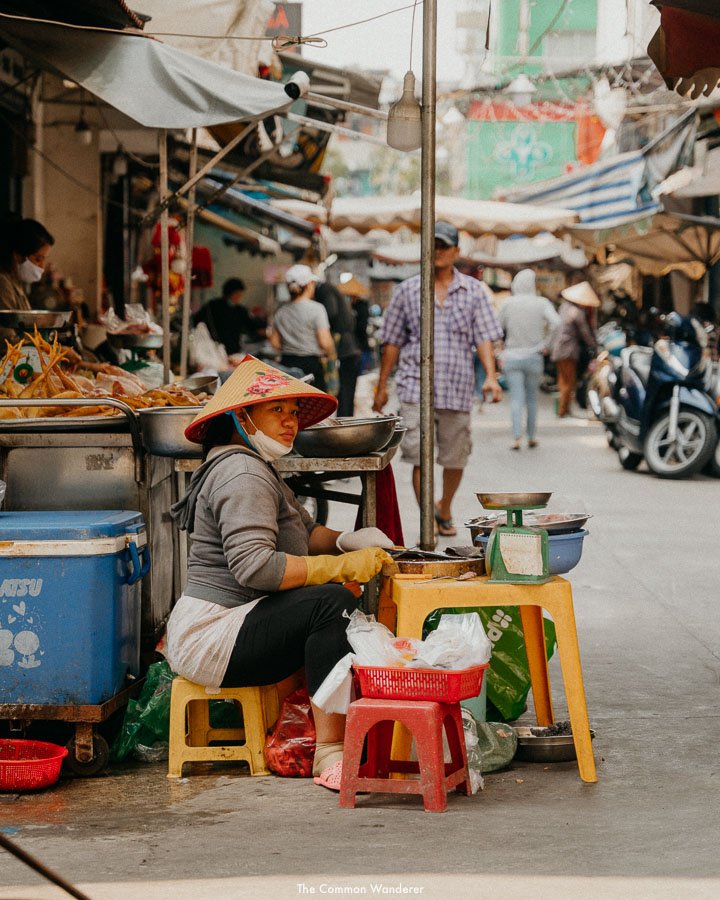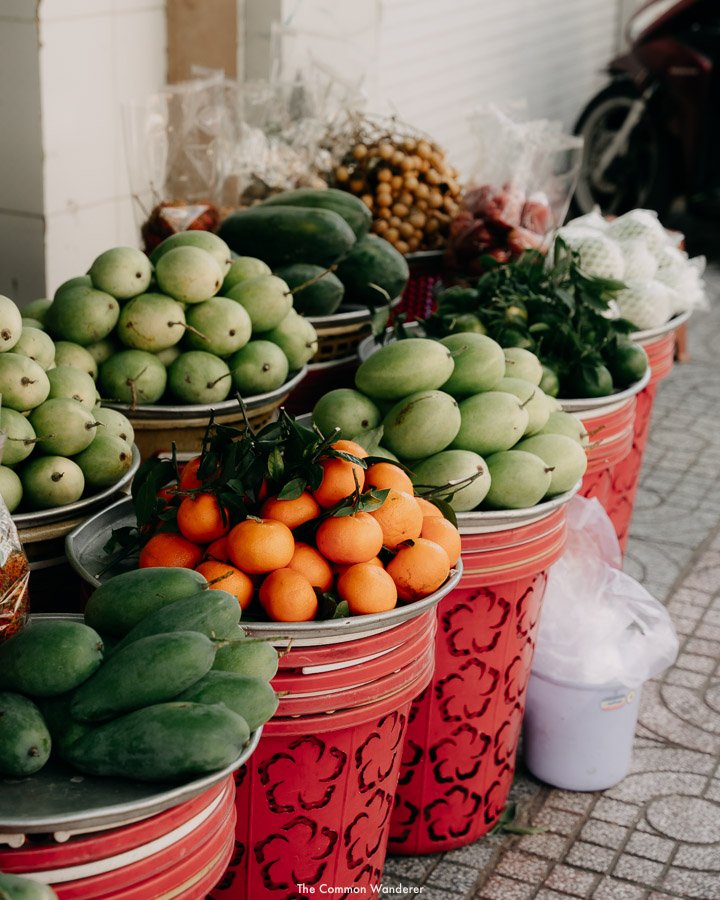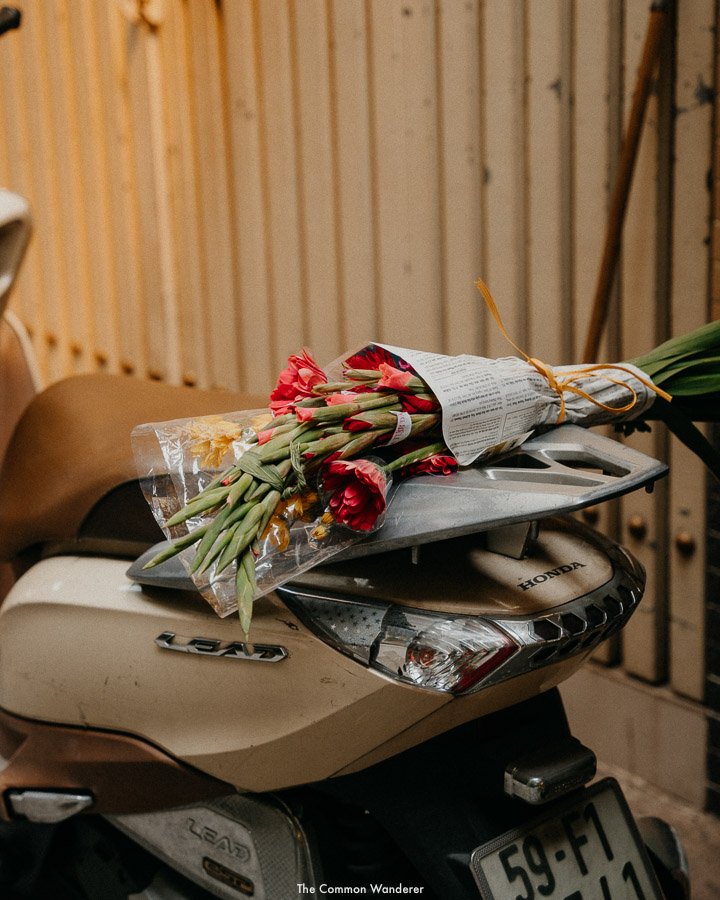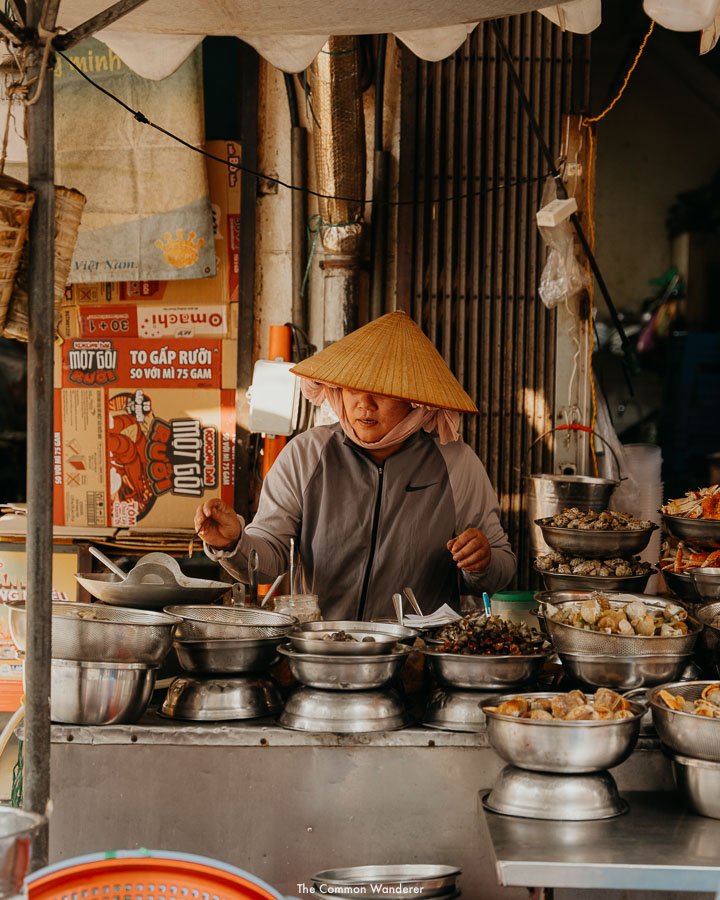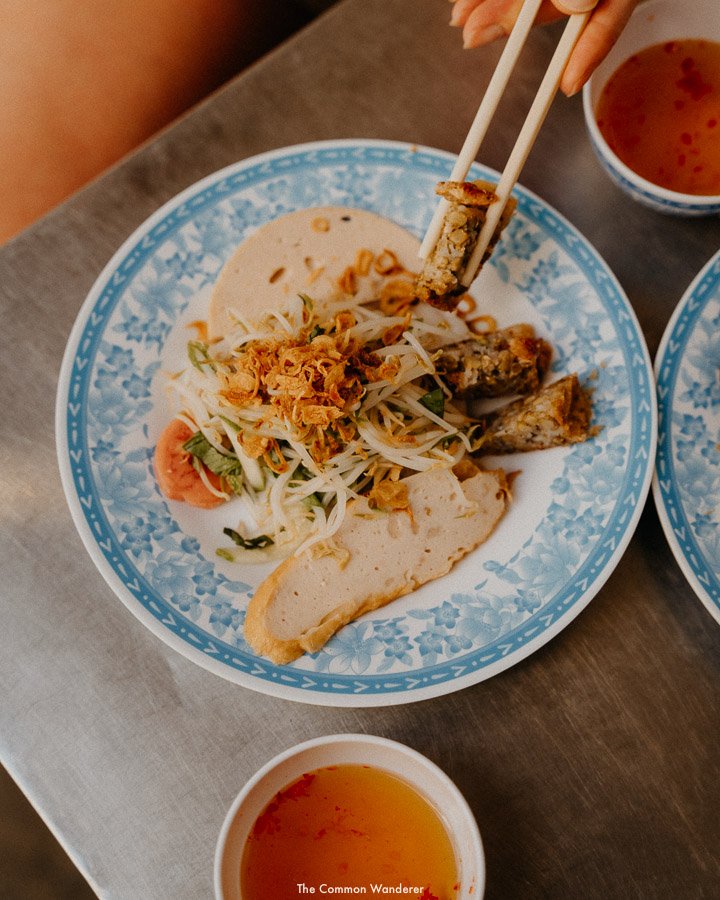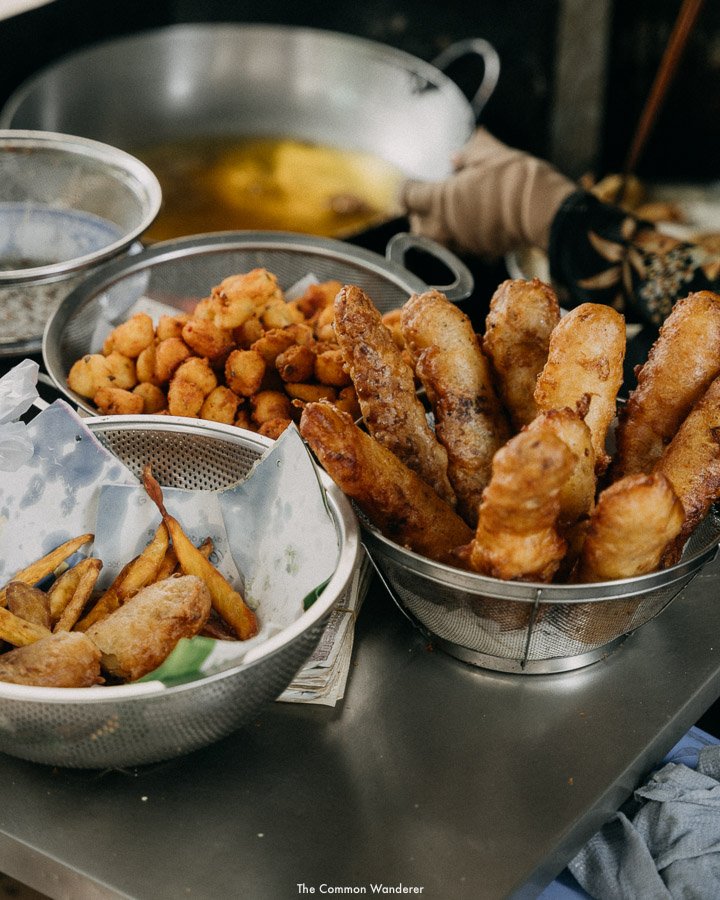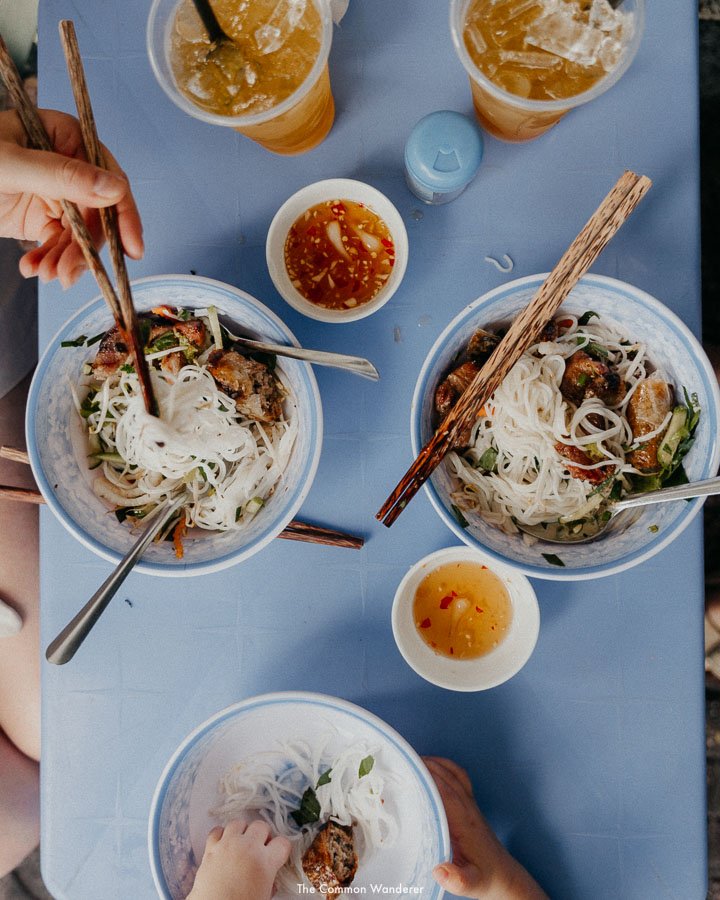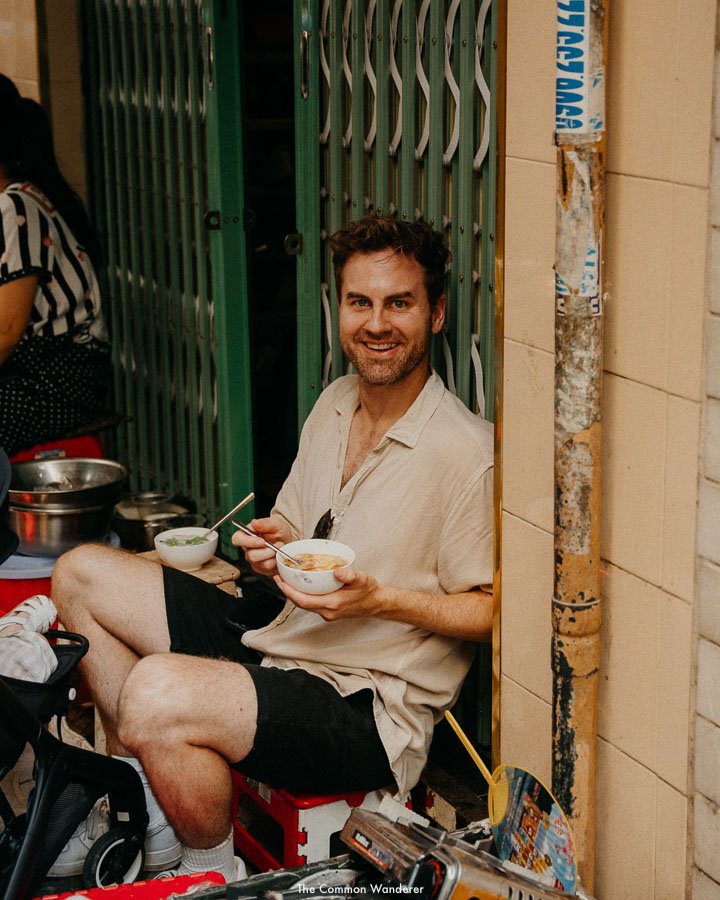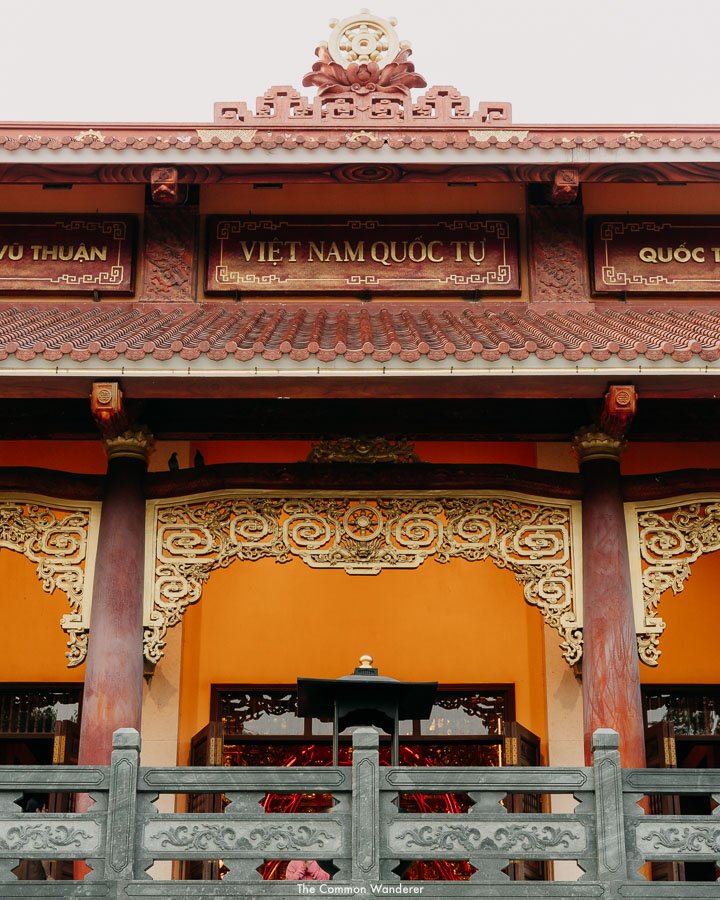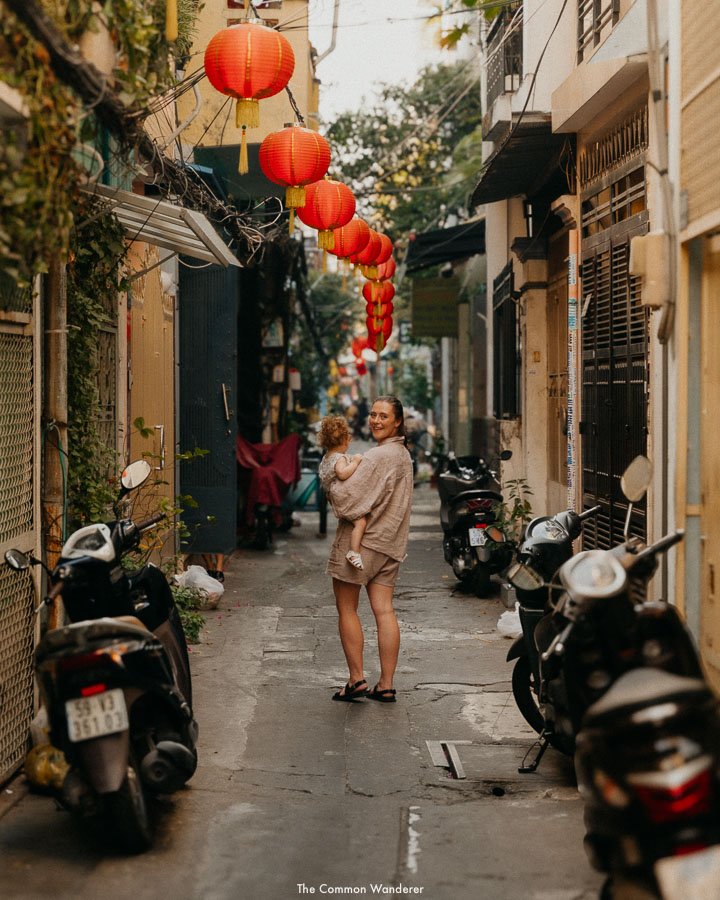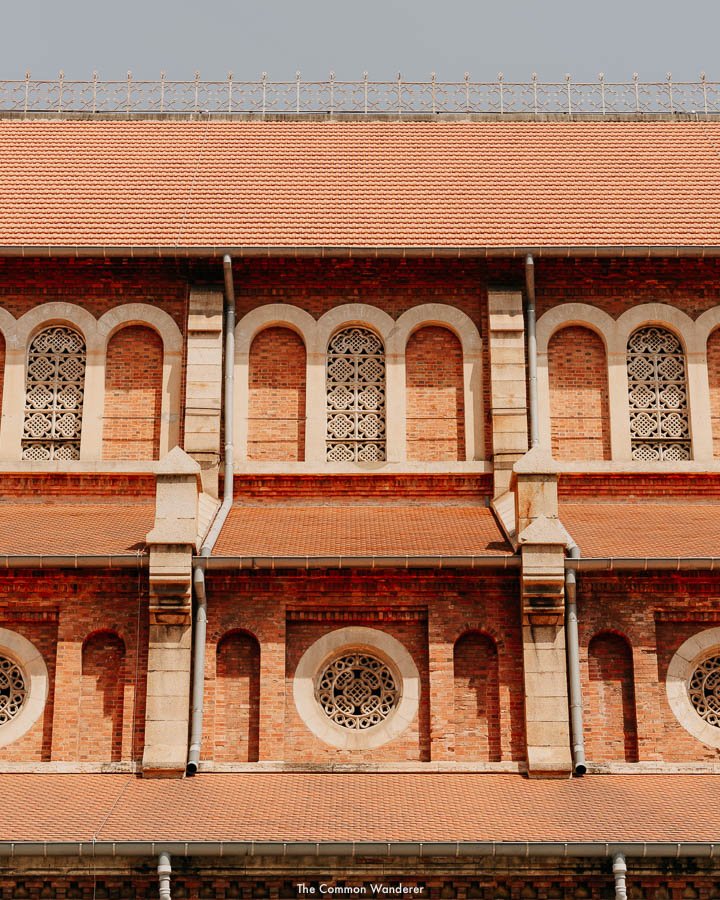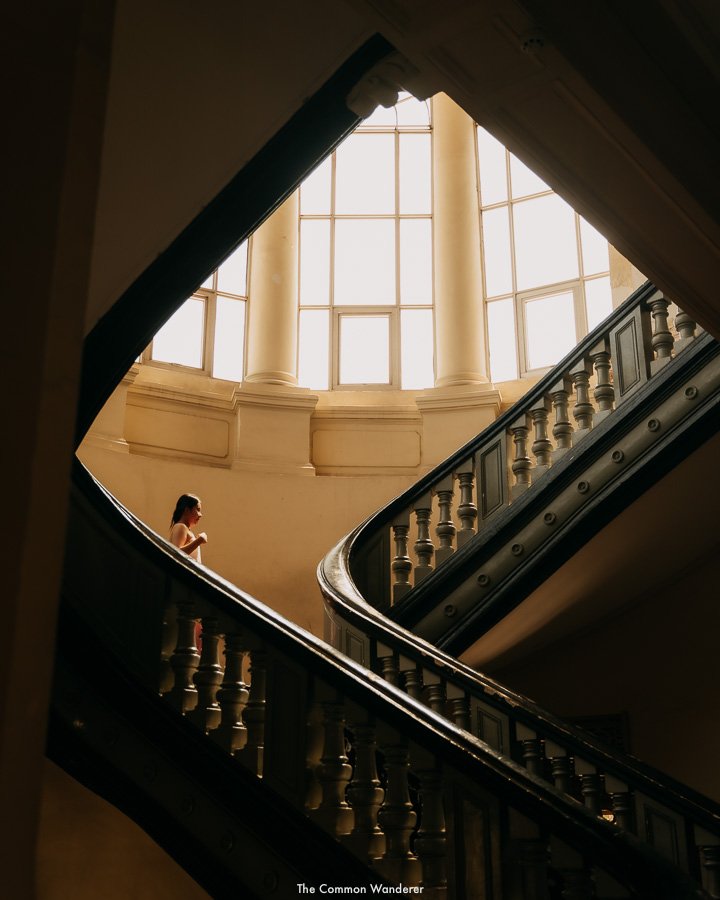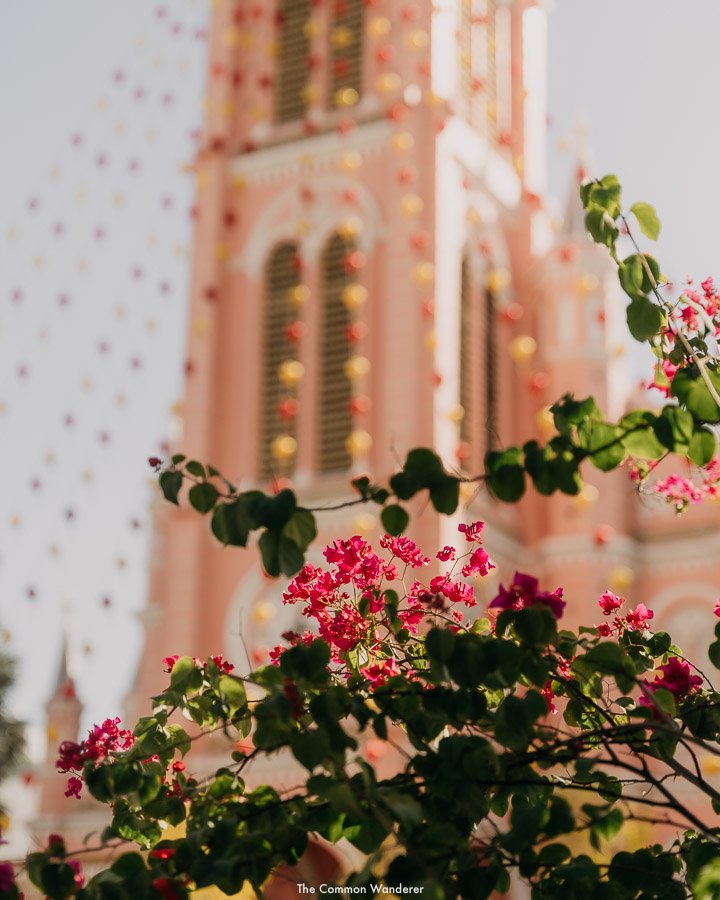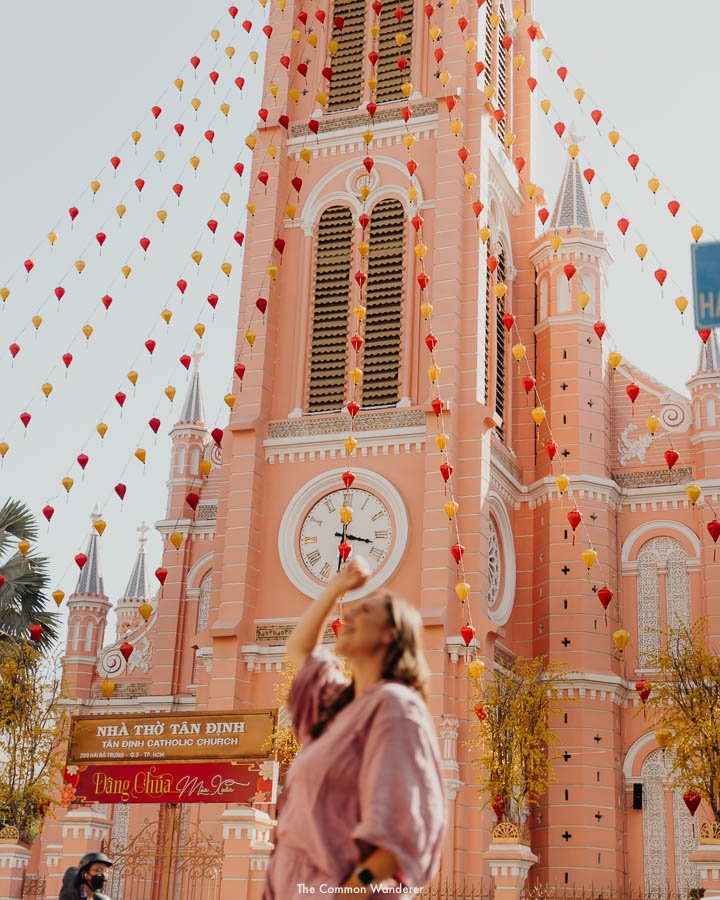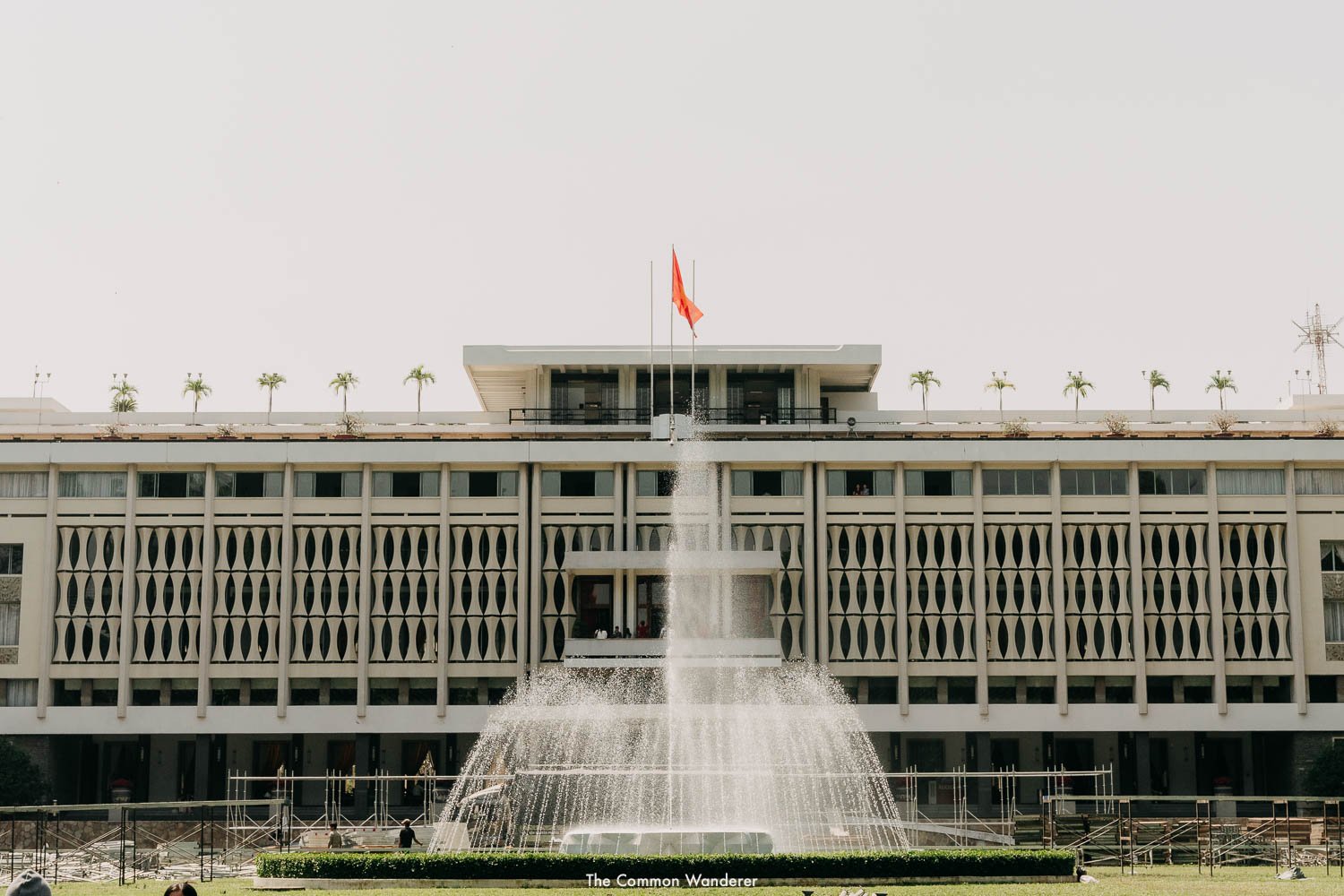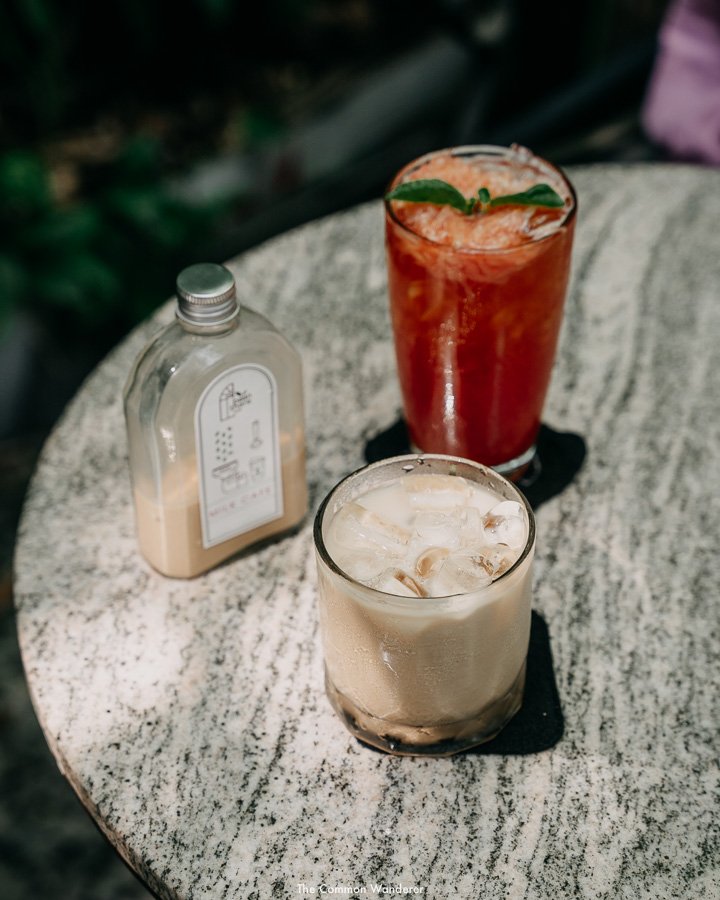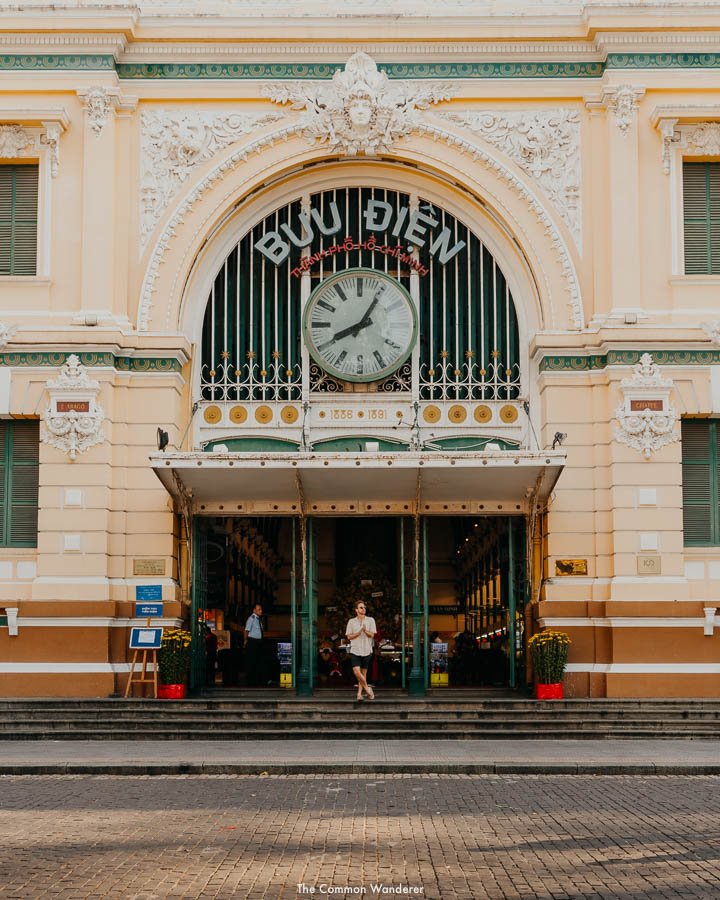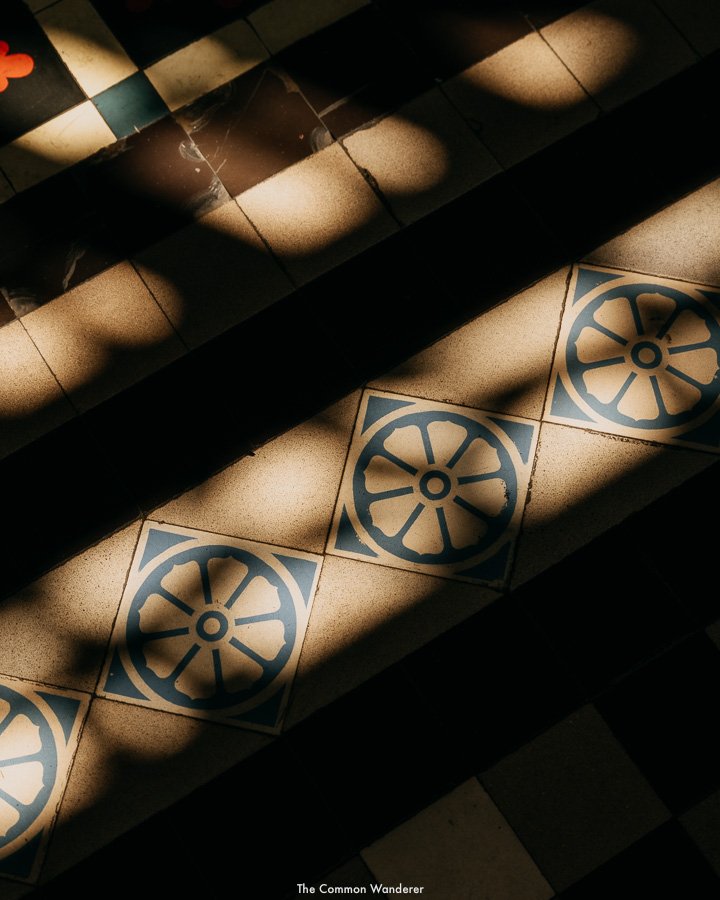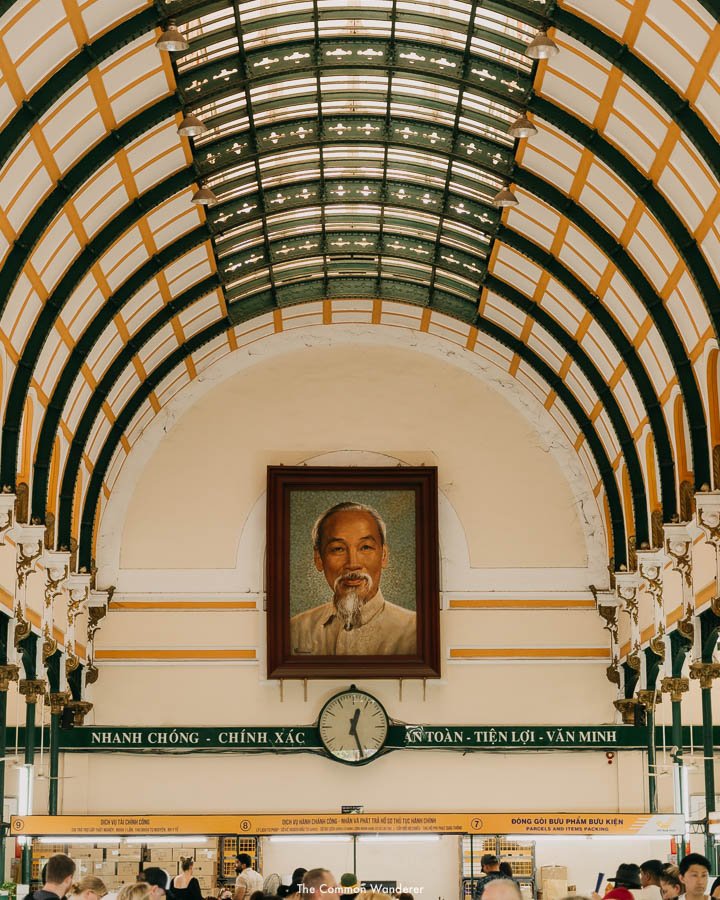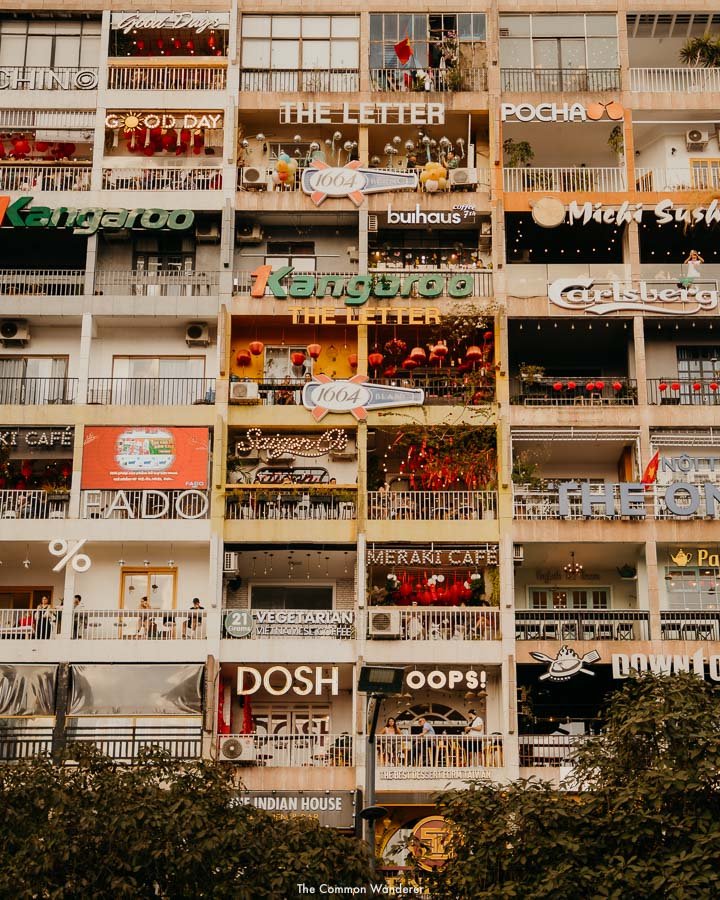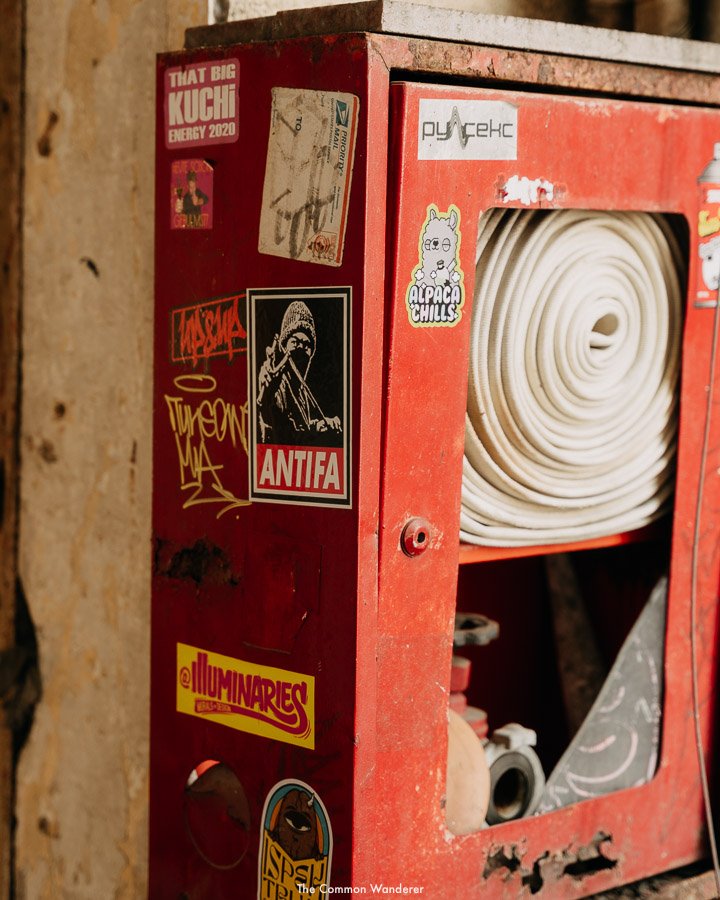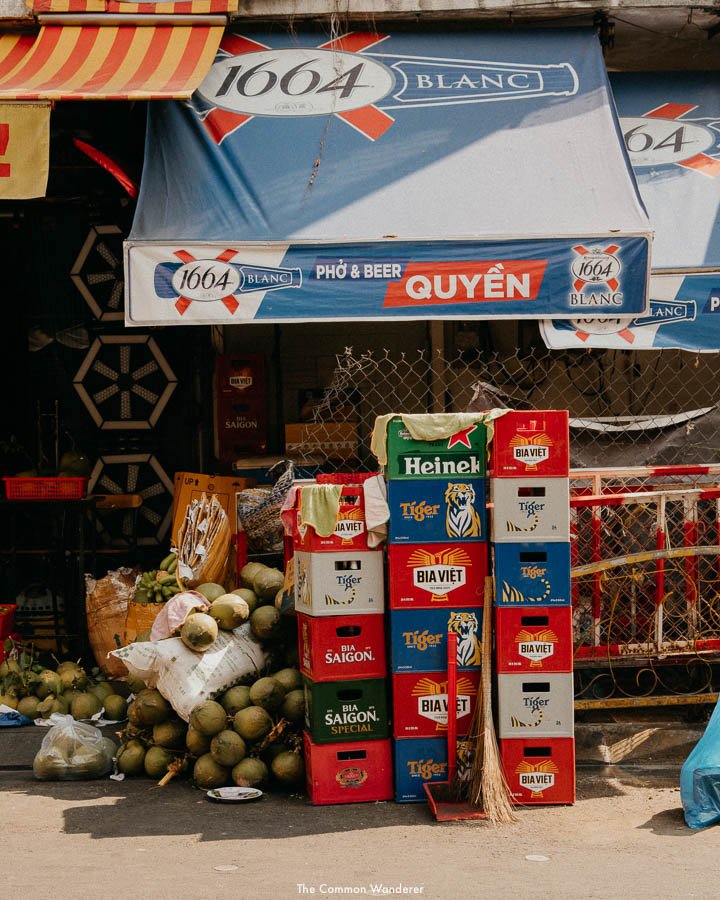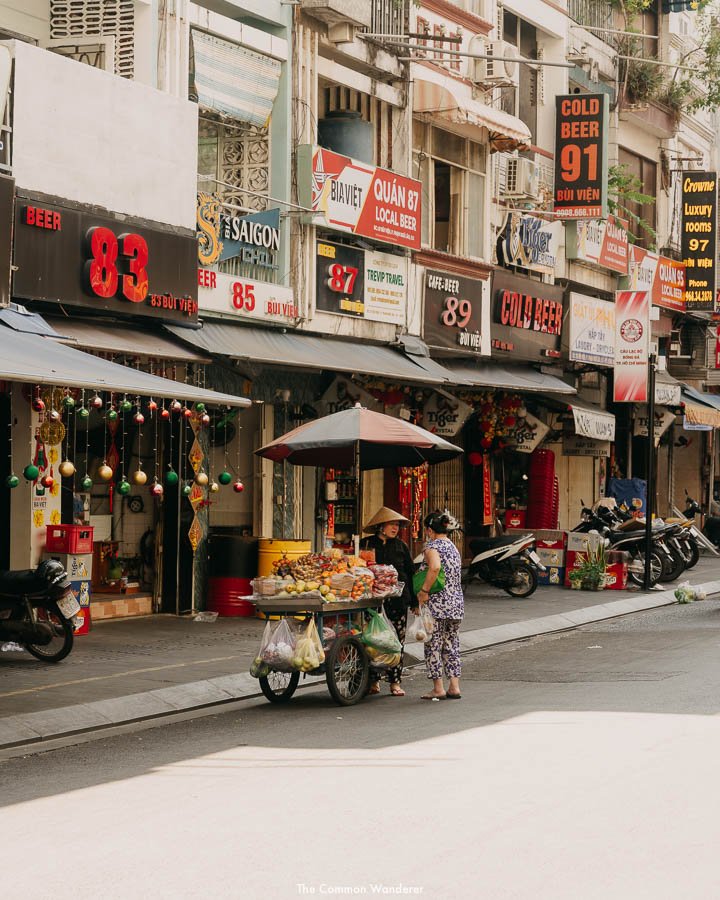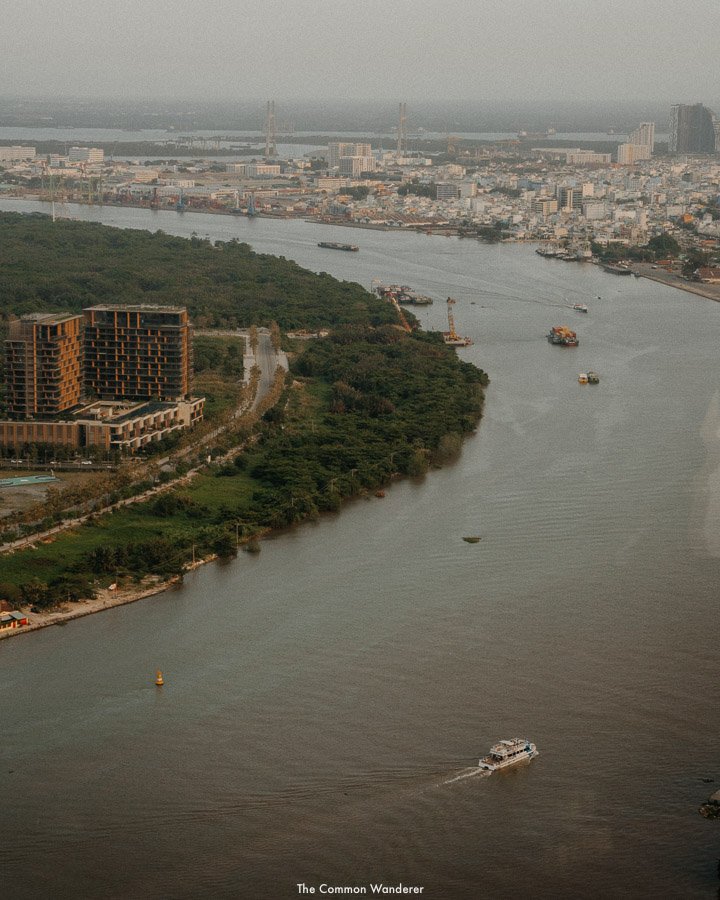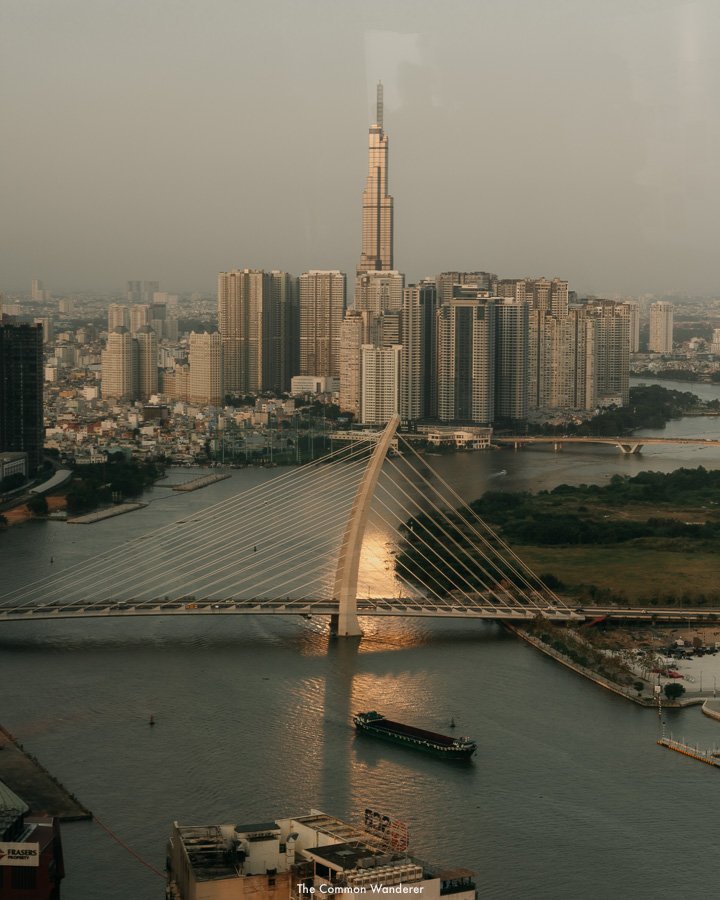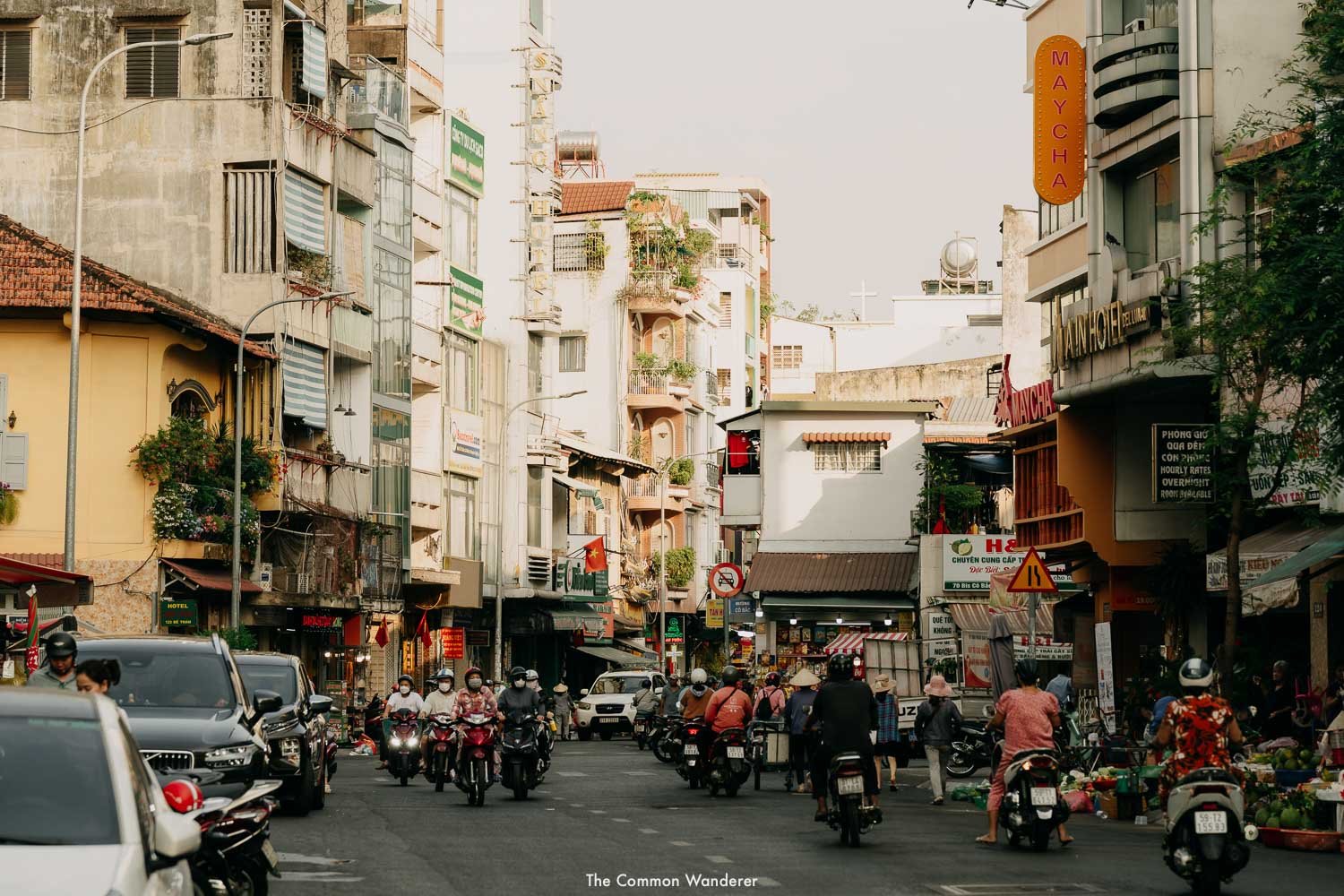The Best Things to do in Ho Chi Minh City (Saigon), Vietnam's Underrated Metropolis
Experience the best things to do in Ho Chi Minh City with our personally curated guide, including what to see and do, where to stay and eat, how to get there, and around.
We’ve heard it said that you either love or hate Ho Chi Minh City.
Either you get swept up by its always-frenetic pace, the sticky heat beating down through the tangle of buildings and knotted electrical wires, the bewildering traffic, the clang and sizzle of its many street food carts, its flickering neon lights and energy. Or you arrive and immediately beeline for the nearest exit and a calmer pace.
You’ll find us firmly in the first camp.
Vietnam’s southern city is, admittedly, transforming into an urban metropolis. Gleaming skyscrapers, fast-paced commerce and flashy establishments are propelling the country forward at dizzying speeds. But beneath that constant hum of modernity, glimpses of daily life can always be found.
In the mornings before the thick blanket of humidity settles over the city and the streets become choked with traffic fumes and chaos, there’s just hazy golden light, a quiet stillness, and the very first hints of brewing caffeinated rocket fuel tickling in your nose.
Early worms stack crisp baguettes in metal carts ready for the day’s Bánh mi orders, meditatively sweep the streets clean of yesterday’s debris, or stare contemplatively from plastic stools over bowls of steaming savoury broth.
In the evenings, Saigon’s side streets and squares cheerfully erupt into life; Kids play badminton with their parents as tightly-wrapped parcels of food are collected from favourite carts, friends and strangers sit shoulder-to-shoulder on plastic stools spilling onto the street, the steam from their bowls illuminated by flickering neon light. Karaoke playlists are loaded, and fresh, crisp Bia Hoi is poured from tap to glass.
In contrast to the heat and honking bedlam of the day, it’s these daily bookend hours that were not just our favourite to wander through the city in, but also what we feel makes the city deserving of your time and explorations.
Here, you’ll find the best things to do in Ho Chi Minh City, including our recommendations on where to stay, the best things to do, where to source the best Vietnamese coffee, and our absolute favourite spots for filling a hungry tummy.
LOVE OUR PHOTOS? Edit like us with our Tropical Dreams Preset Packs, and Tropical Bliss mobile video filters, inspired by the tropical beauty and colour of this beautiful country
HO CHI MINH CITY
SNAPSHOT
TOP THINGS TO SEE | Explore District 1, War Remnants Museum, Bitexco Tower, Cu Chu Tunnels, Saigon’s Markets
WHAT TO EAT | Pho, Bún thịt nướng, Bánh cuốn nhân thịt, Banh Mi
WHERE TO STAY | Yu Stay Apartments, The Reverie Saigon, Chez Mimosa
BEST TOURS | Cu Chi Tunnels, City walking tour, Saigon food tour
BEST TIME TO VISIT | January - March
CURRENCY| Vietnamese Dong
HOW TO GET AROUND | Grab (car or scooter)
WHERE TO STAY IN HO CHI MINH CITY
LUXURY
THE REVERIE | Opulent to the point of obnoxious, but the Reverie Saigon can’t be beaten on luxury and old-world hospitality
HOTEL DES ARTS SAIGON | An MGallery collection design-forward boutique hotel, blending modern luxury and traditional furnishings, just a stone’s throw from Notre Dame cathedral
MID-RANGE
PROSTYLE HOTEL HO CHI MINH CITY | Vibrant, eclectic and with an epic buffet breakfast to boot, you’ll find ProStyle in the heart of District One - perfect for exploring!
FUSION SUITES | Scandi vibes in the heart of Saigon, you’ll find a kitchenette in each suite, along with a hearty buffet breakfast and al fresco terrace dining at the onsite Fresh Restaurant
BUDGET
CHEZ MIMOSA | Great value for money, with cheap and cheerful rooms and a rooftop terrace for evening drinks
YU STAY APARTMENTS | Where we stayed during our two visits to Ho Chi Minh City. Newly built apartments in District One with of everything we needed for a comfortable stay (especially with a toddler)
THINGS TO DO IN HO CHI MINH CITY (SAIGON)
LEARN ABOUT THE VIETNAM WAR AT THE WAR REMNANTS MUSEUM
An essential stop for any visitor seeking to better understand Vietnam’s difficult past, the War Remnants Museum offers an unflinching and meticulous insight into the harsh realities of the entire Vietnam War.
Once called the Museum of American Atrocities - before the relationship between the two countries improved - and housed over 3 floors of a fairly nondescript building in Ho Chi Minh’s centre, the collection makes for queasy viewing: reproductions of ‘tiger cages’ used to torture and hold political prisoners, a guillotine used in executions of those prisoners, gruesome and graphic photographs of the My Lai massacre and the impacts of toxic chemical agents like Napalm (the effects which still linger in communities today), glimpses of the global protest movement against the war, and collections of bullet-ridden planes and tanks in the grounds.
It’s worth noting that over the years, the museum has attracted criticism for its ‘propaganda’ and for portraying a one-sided view of the conflict — although we do wonder if perhaps that’s because it’s quite rare for the victims of US military action to have the space and accessibility to express the impacts of conflict in such a way.
Either way, the museum is a devastating look at the immense human cost to both Vietnamese civilians and soldiers and American soldiers, and we found it to be an incredibly sombre and confronting experience, so definitely add it to your list of things to do in Ho Chi Minh City.
THE DETAILS
Where | Phường 6, District 3, HCMC
Entrance Fee | 40,000 VND per person
Opening Hours | 7:30 am - 5:30 pm
BOOK | Skip-the-line access with this highly-rated War Remnants Museum & Independence Palace tour
SEE SAIGON FROM ABOVE AT THE SAIGON SKYDECK
Is it a tourist trap? Yes. Is it expensive? Yes. Should you do it? YES.
We always appreciate seeing a city from above, hovering above the chaos at street level and getting to observe all the life that exists on its streets from a totally new vantage point. The unique lotus-shaped Bitexco tower is visible from almost every corner of the city — and its Saigon Skydeck is the perfect place for some birds-eye viewing.
Offering 360-degree views over HCMC, you really could spend an age up there discovering every nook and cranny of Saigon, pointing out its various landmarks, its mix of colonial and modern architecture, and the pace of new construction visible from each new window. Given Saigon’s pollution, don’t expect the clearest of views from the top - but on the day we visited, we actually found the gold and pink haze provided a kind of ethereal glow; towers in the distance seemed to emerge like ghost ship silhouettes and it gave an unexpectedly dreamy quality to this dynamic metropolis
Bonus, it’s air-conditioned, which provides a very welcome relief from the steaming afternoon air - and from the sun beating through the floor-to-ceiling windows of the observatory itself. The tower was also, surprisingly, very free of tourist crowds when we visited in the late afternoon.
Tickets are available to purchase until 45 minutes before closing, and can also be booked online ahead of time (purchase them on Klook here or GetYourGuide here).
THE DETAILS
Where | Bitexco Tower Saigon Skydeck, District 1, HCMC
Entrance Fee | 240,000 VND per adult, 160,000 VND for seniors & minors (2024). Children under 4 are free, including free water and use of the binoculars
Opening Hours | 9:30 am - 9:30 pm - last tickets 45 mins prior to closing
BOOK | Buy tickets ahead of time on Klook here or GetYourGuide here
NOTE | There used to be a Heineken world here which seems to now be permanently shut. Also doesn’t provide access to the Lotus-shaped outcrop
EXPLORE HO CHI MINH’S OTHER EXCELLENT MUSEUMS
HO CHI MINH CITY MUSEUM
Housed in a stunning French colonial-era building (which in itself is a must-see), the Ho Chi Minh City Museum (link) is the custodian of the city’s often tumultuous, always fascinating past.
A range of exhibits walk you through Vietnam’s varied history, from prehistoric times and the story of settlement in the region, through the struggle for independence against French colonialism. It provides an in-depth look at the Vietnam War and its aftermath and the country’s ongoing development as a growing SE Asian economic powerhouse. All exhibits feature a decent collection of artefacts, photographs, and documents that paint a detailed picture of the city’s evolution over time.
A personal highlight was its exhibition on the struggle for independence from French rule - it’s always super interesting to see history from the lens of the oppressed. Additional exhibits showcase traditional Vietnamese costumes, folk art, and artefacts from various ethnic groups, as well as an impressive collection of antique ceramics, furniture, and coins.
We’re not going to lie, the museum itself isn’t the greatest you’ll ever set foot in - but if you’re in Saigon for three or more days, it’s definitely worth a visit, if not simply for the building itself.
THE DETAILS
Where | 65 Lý Tự Trọng, Bến Nghé, District 1, HCMC
Entrance Fee | 40,000 VND, cash only
Opening Hours | 8 am - 5 pm every day
HO CHI MINH CITY MUSEUM OF FINE ARTS
The Ho Chi Minh City Museum of Fine Arts is another of the city’s museums housed in a beautiful French colonial-era building and is worth a stop if you’re interested in art, or keen to understand Vietnam’s rich cultural scene.
The museum's collection ranges from ancient sculptures and traditional handicrafts to modern paintings and installations, blocked into pre and post-1975.
Each floor of this magnificent building is dedicated to showcasing different eras and styles of Vietnamese art. The ground floor often hosts temporary exhibitions, spotlighting emerging artists and contemporary themes, while the upper floors showcase the museum's permanent collection, which includes works by some of Vietnam's most celebrated artists. It does contain a lot of political and war rhetoric, but amongst that, there are some absolute gems that are worth your time (and even a position in the Louvre).
One thing to note, though, is that the building is not air-conditioned - it can be a hot stroll through the complex, so bring plenty of water!
THE DETAILS
Where | 97A P. Đức Chính, Phường Nguyễn Thái Bình, District 1, HCMC
Entrance Fee | 40,000 VND, Cash only
Opening Hours | 8am - 5pm every day
STEP INSIDE THE JADE EMPEROR PAGODA
An unexpected highlight of our trip to Ho Chi Minh City was the visit we made to the red-hued Jade Emperor Pagoda on the outskirts of District One.
Built in 1909 by the Chinese community who reside in Saigon, the pagoda is dedicated to the Taoist Jade Emperor and is definitely one of the most atmospheric places to visit in this bustling city. A heady mix of incense, flower offerings and the subtle scent of aged wood hangs heavy in the air, the scent of which actually transported us to another of our favourite countries, Nepal, and the temples of Kathmandu.
Take your time to marvel at the architecture, adorned with elaborate sculptures of dragons and phoenixes, vibrant tile mosaics, and intricate carvings depicting scenes from both Buddhist and Taoist legends. You can also walk through the surrounding figures of worship, including the God of Hell, Goddess of Mercy, and the God of Wealth - which are frequented by faithful who come to offer incense, prayers, and hopes for the future — though do note that photography isn’t allowed in this section.
Beyond its obvious beauty and religious significance, we found it an interesting insight into the lives and beliefs of the Chinese community in Vietnam.
Entrance to the Jade Emperor Pagoda is free, however, you can request a tour guide, who will explain the importance and architectural details of the pagoda.
THE DETAILS
Where | Jade Emperor Pagoda, 73 Ð Mai Thi Luu
Entrance Fee | Free, although donations are appreciated
Opening Hours | 7 am - 6 pm
SPEND A DAY AT CU CHI TUNNELS
While the Americans may have had the mightier weapon power during the Vietnam War, the Cu Chi Tunnels are proof that the Vietnamese had incredible ingenuity and strategy on their side — two factors key to their successful resistance.
About a 1.5-hour drive (in good traffic!) from Ho Chi Minh City, the Cu Chi tunnels were used by the guerilla-style VietCong to go, quite literally, underground to hide from their enemy and plan offensive attacks (learn more about the tunnel’s history here).
Today, the tunnels have been preserved - and widened slightly to accommodate Westerners - and the complex has now transformed into a museum of this unique style of warfare, becoming one of Vietnam’s most visited tourist sites in the process.
We took a private tour of the tunnels (book the one we did here), and while it was an interesting visit, we have to admit we have mixed feelings about it. Like similar sites around the world, the experience felt a little over-commercialised and soulless; many of the exhibits felt gimmicky and the photo ops a little tacky.
Any visit here is also punctuated by the sound of trigger-happy tourists firing war guns at the range, a totally unnecessary detour every visitor is funnelled through and forced to spend a good few minutes within an ear-shattering range of shots being fired without any protection. We’d probably recommend Ben Duoc over Ben Dinh (where we went) as they are meant to be more authentic examples of the tunnels in their original state and less crowded with tourists than the main site.
For those travelling here with kids: it does get hot during the day, so come prepared. We found the site is entirely pram-friendly too — and seriously, bring some kind of headphones with you if you can to protect sensitive little ears at the firing range!
THE DETAILS
Where | Phú Hiệp, Củ Chi, HCMC
Entrance Fees | 125,000 VND per person
Opening Hours | Daily, 7 am–5 pm
BOOK | Book a Cu Chi Tunnels Day Tour (this is the private day tour we did, or an affordable group trip), or a Ben Duoc Tunnels tour
SAMPLE LOCAL LIFE IN HO CHI MINH’S MARKETS
Saigon’s markets are where culture, cuisine and commerce collide; a microcosm of the city itself and vital to the day-to-day life of its residents. They’re vibrant, chaotic, and utterly captivating - and for us, the perfect places to understand this bustling city and its people.
The heart of the city is the historic Ben Thanh Market. With its art deco facade and iconic clock tower presiding over the hustle and bustle of central Ho Chi Minh City, it’s one of the most recognisable icons of the city.
While you can find just about anything here, from fresh produce and seafood to handicrafts, textiles, and home decor, it’s become somewhat of a tourist trap over the years, selling same-same souvenirs and nicknacks for tourists.
This lack of authenticity takes the shine off a visit, however, it does still make for a wonderful starting point for first-time visitors. In the evening, the market transforms into a street food haven, perfect to sample your first Vietnamese street food.
Beyond Ben Thanh, there are markets in every district, and seemingly on every street corner. In the heart of Chinatown is Binh Tay Market (District 5), another art deco delight but far more local in vibe. Don’t expect tourist-centric goods, it’s mostly wholesale here, but from a purely visual perspective, the colours and details are thoroughly enjoyable to witness. There’s also a food hall that serves up Vietnamese delights.
Possibly our favourite market though, is Bàn Cờ, located deep in the laneways of District 3. The wet market is filled with the usual sights and sounds - fresh meat and seafood, vegetables, textiles, and gossiping Aunties. You’ll also see things you weren’t prepared for - ox tongues, brains, intestines, snakes, and snails by the bucketload.
It’s narrow, sweaty, and colourful, and is the most authentic place we visited in the city. There are also a number of very good street food vendors within the markets- we ate amazingly well here, trying sủi cao tôm thịt (dumpling soup) and a dessert of Chè Changhi (coconut milk-based pudding) which we still dream about.
BOOK | This wonderful Saigon markets & food tour
EAT TILL YOU CAN’T EAT NO MORE & JOIN A SAIGON FOODIE TOUR
The heart of Ho Chi Minh City's culinary scene beats strongest on its streets, where food vendors and open-air markets dish out local favourites - not surprising in a city of 10 million people, where almost 1 million make a living by selling food on the street.
Street food is a vital part of Saigon, and it’s on the streets where you’ll find the best and most authentic food.
But that being said, don’t sleep on the restaurant scene which is transforming Saigon’s gastronomic offering by blending traditional ingredients with global culinary techniques.
To help us navigate the vast foodie scene in town, we joined a street food tour which opened our eyes (and taste buds) to a world of Vietnamese cuisine we knew nothing about.
We visited nondescript Michelin-recommend holes in the wall, and street sellers, and devoured some of the best Banh Mi ever while delving deeper into the local markets and discovering local delicacies. The tour then allowed us to enjoy the rest of our time in Vietnam much more, as we knew what and where to find the best food.
We highly recommend joining a food tour (book ours here) - it was potentially the best thing we did in Ho Chi Minh City, but if you’re keen on your own explorations amongst the city’s myriad of markets and vendors, below is what you need to try, and where.
STREET FOOD & DISHES TO TRY IN SAIGON
TÀU HỦ NÓNG | Often found on street corners, Tàu Hủ Nóng is a silken tofu pudding with ginger syrup, coconut milk, pandan leaves and tapioca pearls. Sweet, spicy, and savoury, all at the same time
PHO | Pho is the quintessential Vietnamese noodle soup, and a breakfast (and for most tourists, lunch and dinner) staple. A delicious broth traditionally made from beef bones and a blend of spices. Served with rice noodles, tender slices of beef (or tofu), and fresh herbs, it’s the perfect dish.
BÚN THỊT NƯỚNG | One of the best dishes in Vietnam, hands down, Bún thịt nướng pairs grilled marinated pork with vermicelli noodles, fresh herbs, and salad. Topped with peanuts and fried shallots, it's served with tangy nước chấm sauce. Washed down with an iced-jasmine tea, is the best way to start the day
BÁNH CUỐN NHÂN THỊT | A personal morning favourite of ours is Bánh cuốn nhân thịt, which consists of thin, steamed rice flour rolls filled with seasoned ground pork. The dish typically includes rice flour, ground pork, bean sprouts, wood ear mushrooms, shallots, various herbs and fish sauce for dipping.
BÁNH MÌ | Don't miss out on bánh mì, a Vietnamese sandwich that's a symphony of flavours packed into a crispy baguette
BÒ LÁ LỐT | Bò lá lốt is a dish of seasoned ground beef wrapped in lá lốt leaves (betel leafs), which are then grilled to perfection. The leaves leave a peppery and slightly bitter flavour that complements the savoury, spiced beef. Often served with rice noodles and fresh herbs
BÁNH XÈO | A sizzling savoury pancake filled with shrimp, pork, and bean sprouts, wrapped in lettuce, and dunked in tangy fish sauce
CƠM TẤM/CƠM GA | Cơm tấm, or "broken rice," is typically served with grilled pork or chicken. Accompanied by a fried egg, fresh vegetables, and pickled sides, it's completed with nước chấm sauce. Simple, delicious and cheap
SỦI CAO TÔM THỊT | Soup wonton dumplings filled with a mixture of minced shrimp, pork, water chestnuts, and spring onions, typically served in a clear broth alongside fresh herbs, bok choy, and fried pork fat.
FRIED BANANAS (CHUỐI CHIÊN) | A popular Vietnamese street snack usually made with small and ripe chuối sứ bananas coated in a light, crispy batter, deep-fried to golden perfection. The epitome of street food heaven
CHÈ CHANGHI | The weirdest, most delicious dessert ever - a traditional coconut milk-based sweet soup with grass jelly, tapioca pearls, flan cakes and pandan jellies. Chè is served just about everywhere, comes in endless variations, featuring ingredients like mung beans, tapioca pearls, and tropical fruits
PLACES TO EAT IN SAIGON
ANAN SAIGON | A renowned 1 Michelin Star restaurant in Ho Chi Minh City, celebrated for its innovative approach to traditional cuisine. Must-tries include the elevated Pho Cuon and the signature "Pho" Burger. Pricey, but worth it
PROPAGANDA | First-time visitors to Vietnam will love Propaganda. Serving all the Vietnamese favourites, but without the nerves that surround street food experiences. Their signature spring rolls are a winner, as is the Com Ga. Lots of vegetarian options
DONG PHO RESTAURANT | Serving central Vietnamese cuisine, Dong Pho is unassuming, yet exceptional, and probably one of the best restaurants in Ho Chi Minh
PIZZA 4PS | We’d live here if we could. A trailblazing pizzeria chain in Vietnam blending Italian culinary traditions, Japanese precision and Vietnamese ingredients. You can’t go past the pizzas, and our fave was the standard mar the intriguing "Vietnamese Pizza," that truly stand out. Pizza 4P's commitment to sustainability, community, and unparalleled dining has made it a must-visit for foodies in Vietnam.
QUÁN ĂN CÔ LIÊNG | Michelin-recommended hole-in-the-wall restaurant in District 3, famed for its Bò lá lốt. Fresh, flavoursome, and cooked to perfection, Cô Liêng deserves its reputation
NGUYỄN TRUNG TRỰC | This nondescript street vendor sells the best bún thịt nướng in District 1. An explosion of flavours and the perfect way to start the day
MY BANH MI | We’re of the opinion the best banh mi is found on a random street corner where you least expect it, but My Banh Mi is the exception, producing extremely tasty banh mi. Their tofu version was the best we tried in Vietnam, and we tried many
NÂU NÂU | Vegan? Eat here. Nâu Nâu serves two different vegan Vietnamese dishes every day - usually one noodle, and one rice dish. Fresh spring rolls, on the other hand, are always available. Their Bún Chả Giò knows no equal.
BOOK | This 10-stop foodie tour of Saigon, or this highly-rated
HEAD BEYOND DISTRICT ONE
District One is home to almost every tourist attraction in Ho Chi Minh City, and while it’s a wonderful place filled with just about everything a tourist could want, at times it lacks a little, shall we say, depth and authenticity.
One of the best things we did in Ho Chi Minh City was step outside the relative comfort of District One and step inside the chaos of some of the city’s other districts (3, 5 and 6), discovering local coffee shops, bustling markets, foodie hot spots and hidden cultural gems.
Given that we were short on time during our Saigon visit, we opted to maximise our time and efforts by taking this walking tour and couldn’t recommend it enough. Hieu, our guide, was wonderful and really helped us gain a whole new perspective of the city.
Below is an overview of Districts you should make time for:
DISTRICT 3
Despite its location in the centre of the city and bordering District 1, District 3 somehow still feels like an area that tourists largely forget to explore - save for the War Remnants museum located here.
Here, you’ll find a quieter and more residential vibe amongst the weaving alleyways and tree-lined streets with historic French colonial villas.
That said, don’t expect a slow pace here, there are plenty of foodie haunts, sightseeing spots (like the famous pink Tan Dinh church and the Jade Emperor Pagoda - see above) and local markets to explore.
DISTRICT 5
Often referred to simply as Chợ Lớn (China town) - although only half of this sprawling district is ‘officially’ China Town - District 5 is where Chinese immigrants settled during the 18th century, bringing with them unique traditions and trade, spices and incense and in the process creating a distinctly Chinese enclave.
While the rest of Ho Chi Minh rapidly modernises, the tangle of historic buildings brimming with traditional Chinese medicine shops, temples, teahouses and the general old-town allure is undeniable and makes for some wonderful wandering.
Some points of interest in this district include: Binh Tay market, Thien Hau Temple, Hao Si Phuong Alley, and the many, many wonderful eateries found scattered all over the district - best discovered via foot, open mind, and hungry tummy!
Chinatown also spans across District 6, where you’ll also find the beautiful Hau Giang Flower Market.
BOOK | Off-the-beaten-path district tour of Ho Chi Minh City
TAKE IN HO CHI MINH’S COLONIAL RELICS
Colonisation was a shitty time in human history, so as much as we hate to admit it, we’re big fans of colonial architecture - Victorian, Neo-Renaissance, Belle Époque, Gothic and Art Deco styles planted in South East Asia’s sweaty cities in gloriously bombastic style.
Like many parts of Southeast Asia, the colonial relics of Ho Chi Minh have slowly but surely disappeared, replaced with bright shiny towers and economic prosperity.
Still, many remain, especially in Saigon’s District One, and the ones that do are worth a visit, not just to admire, but to enjoy.
The most impressive, at least in our eyes, is the People's Committee Building, an imposing structure that commands attention at the start of Nguyen Hue Street. Its canary-yellow Renaissance-style façade, complete with intricate designs and statues, harks back to a time when Saigon was the pearl of the Far East.
While its doors may not be open to the public, its exterior tells enough of a story, especially at night when it's bathed in light.
Saigon’s Opera House (link), or the Municipal Theatre, feels like a part of Paris dropped right in the centre of Ho Chi Minh City. Designed by French architect Eugene Ferret in 1897, the structure is a masterclass in French colonial architecture - an elegant facade of large windows, grandiose statues, and pastel hues.
Today, it hosts a range of shows and performances including the popular AO Show that showcases Vietnamese country life in a mix of acrobatic, dance and visual art. You can book in advance here.
Finally, the Notre Dame Cathedral of Saigon may not be as grand as Paris’ version, but the ochre-coloured bricks and subtle allure blend perfectly with the city’s colourful style. Built between 1877 and 1883 entirely from materials imported from France in Gothic Revival style, the cathedral is currently under renovation (which isn’t going to be finished anytime soon), so you can only admire it from afar at this point.
Beyond the obvious main relics, we found walking through District One and simply looking up made for a great window into the city’s past.
PHOTOGRAPH VIETNAM’S FAMOUS PINK CHURCH, TAN DINH
You’ll likely have seen countless pictures of Ho Chi Minh City’s flamboyant pink church, Tan Dinh Church on Instagram already, and if you haven’t, you probably will in future.
Set in Ho Chi Minh City’s unassuming District 3, amongst nondescript low-rise apartments and office spaces, Tan Dinh Church is a statement in pink, a defiant burst of joy in a city that has seen its fair share of history's darker chapters.
Built during French colonial rule in Neo-Romanesque & Gothic Revival style, the church itself is stunning, with its pointed arches, ribbed vaults, and flying buttresses a highlight, but the Pantone-hued exterior’s uniqueness makes it one of the best things to do in Ho Chi Minh City.
Lured by the absurdly colourful facade and the opportunity to capture all its beauty in the fading afternoon light, we photographed it from both street level and that famous bougainvillea-covered view (read our short guide to Tan Dinh Church here to find out where).
THE DETAILS
Where | 289 Hai Bà Trưng, Phường 8, District 3, HCMC
Entrance Fee | Tan Dinh Church is free for the public to visit and sightsee
Opening Hours | Daily, 8 am - 12 pm, and 2 pm - 5 pm
READ | Our complete guide to visiting Tan Dinh Church
VISIT THE REUNIFICATION PALACE
Our first impression of the brutalist Reunification Palace (also known as the Independence Palace or Dinh Độc Lập - link) was that it was just another typical government building made for pencil-pushing and red tape — an assumption that we’ll happily admit now totally betrays its huge historical significance.
Built through the early 1960s by South Vietnam’s unpopular president Diem (who never lived to see its completion, having been assassinated 3 years prior) on the site of the former French colonial Norodom Palace, and used as the ruling residence from 1966 - 1975, it was these gates that VietCong tanks crashed through in 1975, heralding the dramatic end of almost two decades of war in Vietnam.
Today, the building has been preserved almost exactly as it was in 1975 and visitors can tour its opulent staterooms, banquet halls and kitschy details. All visitors must join a guided tour (in English or French, they leave every 15 min).
THE DETAILS
Where | Ben Thanh, District 1, HCMC
Entrance Fee | 65,000 VND per person
Opening Hours | Daily, 8 am - 3:30 pm
EMBRACE THE INCREDIBLE COFFEE/CAFE SCENE
You don’t have to search long to get your fix of the good stuff in Vietnam; from the very first crack of sunlight until the final rays fade away each day, the scent of robusta beans and caphe de sua drifts from plastic blue tables and chairs along each street.
First introduced by the French in the 19th century and most commonly brewed using the phin single filter cup, Vietnam’s coffee culture today is as unique as it is globally renowned. Coffee here is served strong (rocket to Mars kind of strong) and sweet; in Saigon it’ll most likely arrive tall, thick with condensed milk and ice, although popular variations from all over the country can also be found (like salted or coconut coffees from the north).
Vietnam’s coffee production has also overtaken Brazil in recent years to become the world’s largest exporter of coffee beans (this BBC article gives a great overview of how Vietnam became a coffee giant).
It’s not just what’s in the cup that’s exciting to delve into here though; an incredibly cool and creative cafe culture has sprung up all around the country, with historic coffee houses packed full of character and charm, hipster third-wave hangouts and hole in the wall espresso spots now lining every street in the country.
One thing is certain in Vietnam: drinking coffee is as much a social pastime and chance to catch up on the latest goss with friends and family, or people watch from a little plastic stool on the roadside, as it is a chance to refuel and we’re absolutely here for it.
We sadly weren’t in Ho Chi Minh long enough to properly dive into the coffee scene there, but these were some of our fave spots for coffee in the few days we had:
CHEO LEO
For the unsuspecting traveller wandering District 3’s streets, the fairly nondescript and humble interior of Cheo Leo is an easily missed landmark. But for locals, and those in the know, the nostalgic blue and white checked tiles, faded walls, and rich scent of roasted coffee of this local coffee shop represent one of the city’s best-loved and oldest cultural institutions.
Now in its 86th year of operation, Cheo Leo is one of Saigon’s original coffee shops. Its founder, Vinh Ngo, mastered the art of cà phê vợt, or ‘stocking coffee’, rich coffee brewed in filters in traditional clay pots over a charcoal stove, and began selling it here in 1938. For decades, Saigon’s residents from all walks of life have met here regularly to chat, celebrate or commiserate, or simply enjoy a moment of peace in a city that’s forever evolving.
Ngo’s unique coffee tradition is now a ritual passed down through generations, with his three daughters now at the helm of the cafe — brewing cups of coffee for the cafe’s visitors from the same charcoal fire and clay pots today.
BEAN THERE CAFE
Amidst the urban jungle of Saigon, down a tangle of hidden alleys and hidden behind a secret garden wall lies a jungle of a different kind: Beanthere DIY House. This coffee house is a surprisingly lush sanctuary providing welcome relief from the bustling streets of Saigon.
It was here, seated next to the grand atrium windows and surrounded by green that we had our first official Vietnamese coffee (an experience one never forgets) on our first morning in the city, and enjoyed a moment of quiet calm in the tropical surroundings. It’s the kind of place where coffee-loving locals and tourists in the know alike come to relax, chat, have business meetings in the lush garden or tap away quietly on keyboards.
The food leaves quite a bit to be desired, but for those looking for a green oasis serving a great cup of joe, this is your place.
CONG CA PHE
It’s rare that we’d say a coffee chain is actually worth visiting, but Cong Ca Phe is one of Vietnam’s best success stories (and exports, with cafes now found in Canada, South Korea, and Malaysia too). Each of its uniquely decorated locations brings Vietnam’s communist era to life - not in a political way, as one might assume - but in a nostalgic, self-confessed ‘hipster’ celebration of founder Linh Dung’s childhood memories growing up in Vietnam’s communist subsidy era.
While every location shares the same lick of army green paint and a preference for pokey, dimly lit interiors stacked with retro paraphernalia and antiques, no two venues actually look alike, which only adds to a sense of adventure every time you visit.
Cong serves up a huge array of traditional coffee options, although their coconut coffee is what they’ve become renowned for, both locally and internationally.
And a few more coffee shots that deserve a visit:
The Running Bean Hồ Tùng Mậu
VISIT THE POST OFFICE (AND SEND A POSTCARD BACK HOME)
While many of Saigon's French colonial landmarks are slowly disappearing, the historic Saigon Central Post Office defies the odds. Thankfully, too.
Located opposite the equally beautiful Notre Dame Cathedral, its striking egg-yolk yellow facade makes it one of the city’s icons, and it remains one of Southeast Asia's most magnificent post offices.
Designed by Marie-Alfred Foulhoux (and not Gustave Eiffel as many other travel sites would have you believe) and built between 1886 and 1891, the building's facade, with its arched windows and intricate friezes, teleports you to the streets of Paris.
The interior is equally stunning, reminiscent of an old train station with its arched ceilings wooden telephone booths, and ornate details. The walls on either side are adorned with historical maps of old Saigon, Cambodia, and Southern Vietnam and offer a window into the world as it was envisioned by French-Indochina in the 1800s.
At the rear though, is one of the most understated things to do in Ho Chi Minh City. Under the constant gaze of Uncle Ho, a range of old-school wooden desks offer visitors the opportunity to do something old-school, pen a message to loved ones back home on the back of a postcard. It’s a simple activity, but adds a wonderful tangible outcome to your visit here. So head to the rear of the post office, grab yourself a postcard, and tell your loved ones you love them.
The post office can become quite crowded by afternoon so for those looking to experience its charm more quietly, a morning visit is recommended.
THE DETAILS
Where | 2 Công xã Paris, Bến Nghé, District 1, HCMC
Entrance Fee | Free
Opening Hours | 7:30 am - 6 pm
VISIT THE CAFE APARTMENTS
Amidst the heart of Ho Chi Minh’s most popular thoroughfare, Nguyen Hue Street, stands something that wouldn’t look out of place in the coolest cities on the planet like Berlin or Budapest - The Café Apartments.
While hard to describe, it’s essentially a former residential block that has morphed into a sanctuary for the city's hipster youth in search of good food, coffee and sweets.
A vertical labyrinth, each story of the complex houses an eclectic array of cafes, restaurants, boutiques, and art nooks - spaces that range from the intimate to the unabashedly avant-garde, each with its own vibe.
There are a lot of coffee shops, the best being Arabica (honestly, the coffee here could power Space X), while Madam Quyên is a great place to stop for food (and egg coffee). Most ‘apartments’ have balconies, which provide some pretty awesome views over the city.
A pro tip is to take the elevator to the top and work your way down, stopping where you feel. Note that there’s a 3,000 VND fee to use the elevator - or, walk the dilapidated stairs.
THE DETAILS
Where | 42 Đ. Nguyễn Huệ, Street, District 1, HCMC
Entrance Fee | Free, or 3,000 VND for the elavator
Opening Hours | 7 am - 10 pm
BEERS, COCKTAILS & BUI VIEN STREET | PARTYING IN SAIGON
Visitors to Vietnam will soon realise that drinking cheap beer is a national pastime, especially in Hanoi. Saigon, though, is a little bit different. Here, there’s also a thriving craft beer scene which is up there with the best we’ve tried.
At the forefront of this movement is Pasteur Street Brewing Company (District One location), a pioneer that has married local Vietnamese ingredients with American craft brewing techniques, producing award-winning beers that have become almost synonymous with craft beer in Vietnam. Their Jasmine IPA is a winner, a perfect blend of floral notes and hoppy bitterness that works perfectly on sweaty Saigon nights.
We thoroughly enjoy savouring Belgo’s Belgian-style beers and hearty European food, while another standout is Heart of Darkness, which has over 100 different beers on its roster (don’t sleep on Kurtz's Insane IPA - delish).
For those with a more refined palette (and larger budget), Saigon is also home to a burgeoning cocktail scene.
Set in a 70’s-style hideaway, Stir is Ho Chi Minh’s best bar. Artisan bartenders craft narratives in a glass as they concoct original and reimagined classic cocktails - try the Nuoc Mia Highball - a mix of sugarcane juice, rum, and various additions to create a vibrant taste sensation.
For lovers of gin, The Gin House, craft signature gin cocktails is a cosy environment in the quieter area of District 1, while Rabbit Hole is a chic, subterranean speakeasy in the heart of District 1, inspired by the whimsy of "Alice in Wonderland”. The bar takes you on a journey down the rabbit hole of mixology and serves excellent cocktails - order the Misty Cold Morning for a taste sensation. It gets busy (especially on weekends) so book in advance.
Centrally located Pillowtalk is another of the most popular cocktail bars in town.
Finally, it would be remiss of us to talk about drinking in Ho Chi Minh City and not mention Bui Vien walking street, the heart of Saigon’s backpacker district. Neon-lit bars playing thumping EDM line the street, and while it’s not as debaucherous as Bangkok’s Khao San Road, it has the same vibes.
Mark visited 10 + years ago and remembers a lot of cheap, drunken nights out here, so if you’re a backpacker on the lookout for a cheap bar and a good time, look no further. Sadly, we’re now too old to enjoy these nights these days, especially with a toddler in tow now, but the memories remain.
TAKE A SUNSET BOAT CRUISE ALONG THE SAIGON RIVER
Snaking its way through the heart of Ho Chi Minh City, the muddy Saigon River has long nurtured Vietnam’s most populous city; first as its lifeblood, then one of the key trading routes connecting Europe with Asia during colonial times, and finally as one of the best vantage points to take in the bustling metropolis.
There are several boat trips you can take along the river; some take in the city’s sights via water taxi, and others connect you with the Mekong Delta (read our guide here) on a speedboat day trip (you can book one with Les Rive on GetYourGuide here or Klook here) - but our favourite way to spend time along the river is on a sunset river cruise.
This sunset cruise departs Tan Cang pier at 5 pm and takes in HCMC’s famous bridges, and its vibrant urban centres as they light up for the evening, shows another side to the city by visiting some traditional fishing areas and also includes a cocktail or mocktail as the perfect sundowner for your HCMC explorations. Book it here
Prefer to see the city under twinkling darkness? This 3-hour dinner cruise that also includes traditional dancing and music is a romantic way to explore Vietnam’s former Pearl of the Orient by water.
BOOK | This amazing sunset river cruise with Les Rive on GetYourGuide here or Klook here
SAIGON TRAVEL INFORMATION & FAQS
HO CHI MINH CITY OR SAIGON?
You’ll notice throughout this guide that we refer to the city interchangeably as both Ho Chi Minh City (its official name) and Saigon (its former, yet still widely used one).
Experts can’t seem to agree on the exact etymology of the name Saigon nor whether it predates French colonisation, but what they do agree on is that the city was called Saigon for hundreds of years before the city’s name was changed postwar to Ho Chi Minh City by the winning North Vietnam government.
Regardless, today the two are used interchangeably on the ground; we found most locals used Saigon conversationally, while official or more formal settings, of course, used HCMC. Others used both names in the same sentence, and one tour guide stated Saigon has two syllables, Ho Chi Minh City has 5, which made his decision.
Personally, we found Saigon was the easiest and most applicable name to use during our time there.
HOW LONG SHOULD YOU SPEND IN HO CHI MINH CITY?
As we mentioned above, we really enjoy Saigon. In fact, we’ve even discussed spending a six-month sabbatical here to savour it all.
As a city, it really has everything - excellent food, amazing bars & nightlife, great attractions, and close proximity to the Mekong Delta, Vietnam’s southern island, and other parts of Southeast Asia (Cambodia, specifically).
So, how long you spend in Saigon really depends on your needs, wants and desires.
For most travellers to Vietnam, 3 days is enough to see the main sights and experience a little of the city’s vibe. But we feel like this undersells the city a little, especially if you’re like us, and like to travel slowly and delve a little deeper.
Therefore, we recommend you spend at least 5 days in Ho Chi Minh City. This will give you enough time to see everything we’ve suggested in this guide but at a slower and more measured pace.
THE BEST TIME TO VISIT HO CHI MINH CITY
Ho Chi Minh has two very distinct seasons: the wet monsoon season from April/May through to November/December, and the dry season that brings some relief when it arrives between December to April.
We travelled during the early dry season and the weather was hot, but pleasant, especially in the morning and late afternoon.
We would avoid visiting during Tet, the Vietnamese New Year, especially as first-time visitors. We did so, and while it was an interesting cultural experience, it caused shutdowns, disruptions, and price surges to our travel itinerary.
Expect crowds in all the major sightseeing spots too, as locals gather for photoshoots and to generally enjoy the best of their cities - which can make for an even more overwhelming experience.
Regardless of when you visit though, expect heat and humidity - Saigon is the epitome of a steaming tropical Southeast Asian city.
HOW TO GET AROUND HO CHI MINH CITY
We used Grab almost every single day in Vietnam, and recommend it for every traveller there.
Both cars and scooters (and food, incidentally) can be booked via the app (you will need a local sim), and we found the interface great, the prices extremely affordable, the drivers friendly, and the whole experience generally very easy and safe.
Because Grab is so easy to use, we actually recommend avoiding traditional taxis here, as they are known for price-gouging unsuspecting tourists.
Unfortunately, the Ho Chi Minh City metro remains unfinished, however, there is talk of Line 1 opening in July 2024. This remains to be seen (works have taken over 10 years!), but if it does, please let us know how it goes in the comments below.
TRAVEL INSURANCE | STAY SAFE IN VIETNAM
If you can't afford travel insurance, you really can't afford to travel. As the current global situation has taught many people, things can go wrong anywhere in the world - and insurance is often the only way of mitigating any issues with minimal expense or stress for you.
Here are our recommendations, based on 8+ years of full-time travel:
FOR TRAVELLERS | HeyMondo - COVID-19 coverage, comprehensive travel + medical insurance, an app with 24-hour medical support, and no out-of-pocket fees. *Get 5% off your policy by booking through our link here.
FOR DIGITAL NOMADS | SafetyWing - COVID-19 coverage, comprehensive travel & medical, and policies can be purchased while already abroad.
CAR INSURANCE | Insurance4CarHire - a great annual car insurance policy
EXPERIENCE THE BEST OF VIETNAM
HO CHI MINH CITY |15+ Essential Saigon Travel Tips, How to visit Tan Dinh Church (Saigon’s Pink Church), Where to eat and drink in Ho Chi Minh City, How to get from Saigon Aiport to City Centre
HOI AN | The best things to do in Hoi An, 15+ Essential Hoi An Travel Tips, How to visit My Son Sanctuary, How to get from Danang Airport to Hoi An, A guide to the Hoi An Old Town Ticket
HANOI | The best things to do in Hanoi, How to visit the Temple of Literature
MEKONG DELTA | The best things to do in the Mekong Delta
PHOTOGRAPHY | Love our photography? Read our detailed photography gear guide, as well as our top travel photography tips!
RESPONSIBLE TRAVEL | Responsible travel is important. REALLY IMPORTANT. Learn our top responsible travel tips to help you, your family and your friends travel more consciously around the globe
ECO-FRIENDLY PACKING ESSENTIALS | Don’t leave home without our favourite eco-friendly travel essentials
DISCOVER THE BEAUTY OF VIETNAM WITH OUR GUIDES
Some of the links on this Things to do in Ho Chi Minh City post are affiliate links.
If you choose to purchase using these links, we receive a small commission at no extra cost to you. Please know that by using these affiliate links, you're directly supporting The Common Wanderer to stay wandering, the running costs of the site, and our ability to provide you with free content to help you on your travels.
That, and you're officially a legend.

